


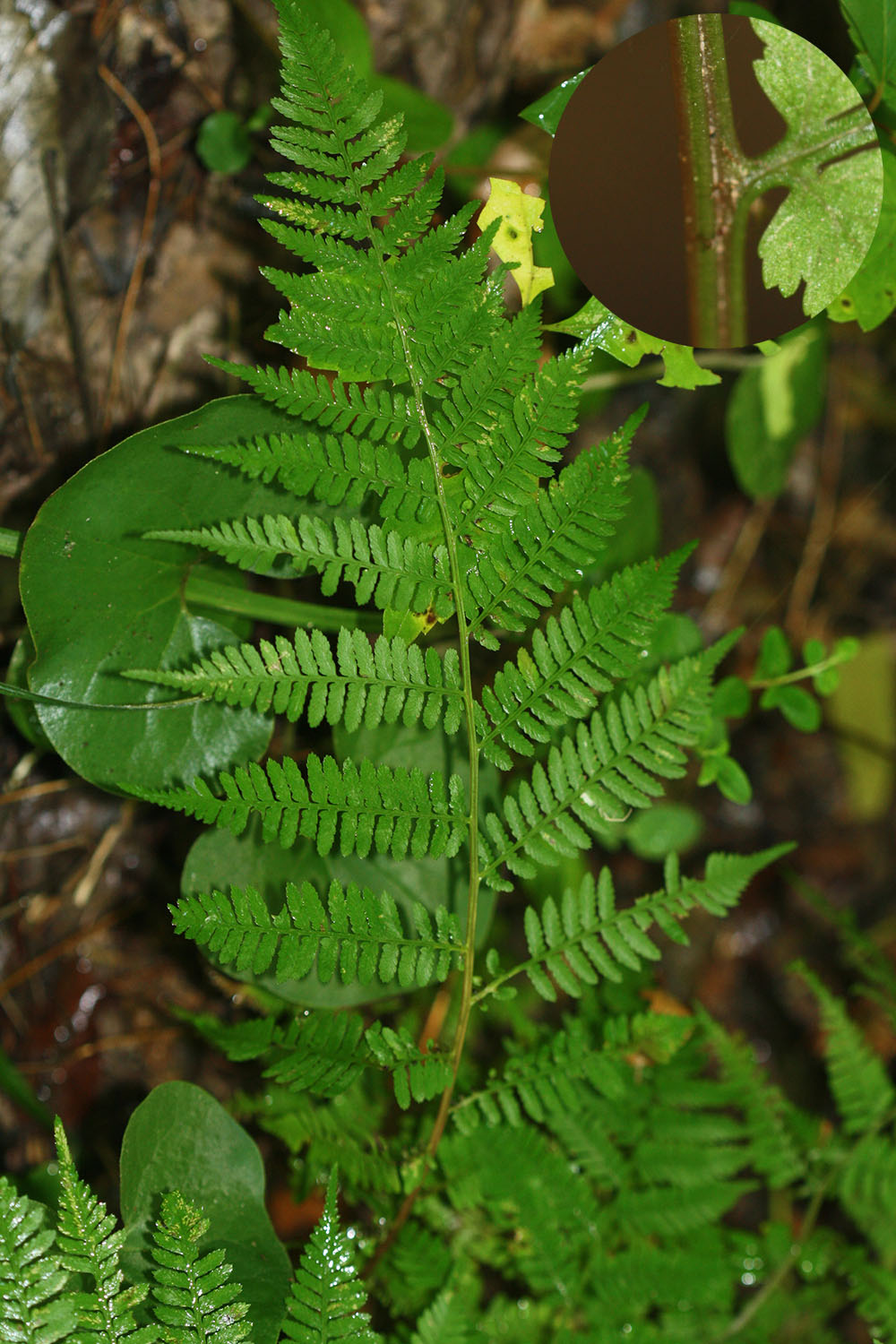
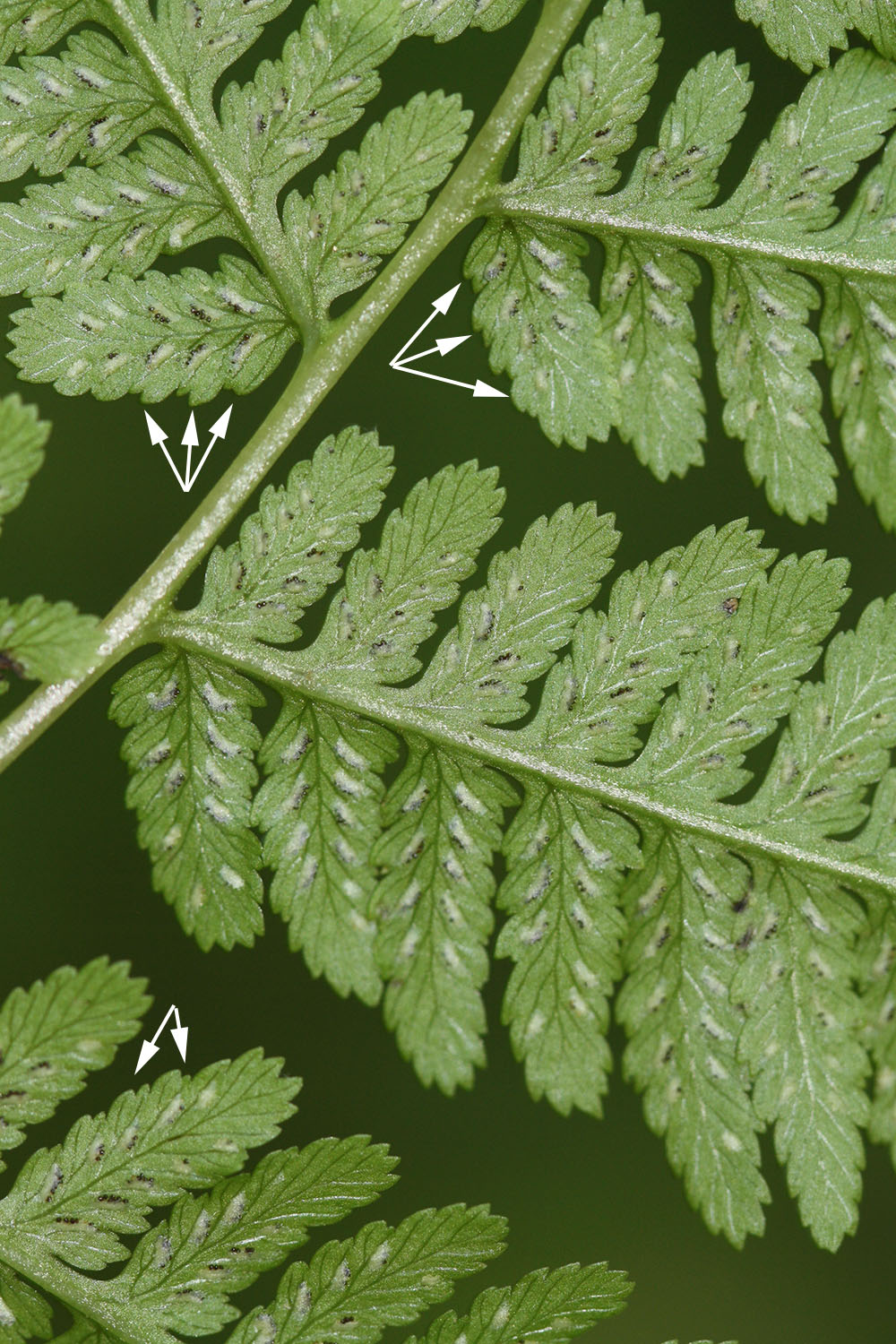
Athyrium asplenioides - Southern lady fern (Athyriaceae). Moist forests. Mt: Common; Pd: Common; CP: Common. One of our most common ferns of moist woods throughout the state. Pinnule margins in this species can vary from shallowly to deeply toothed. Note that the rachis and costal grooves are continuous with one another (inset) and that pinnule margins are doubly toothed, especially toward the base of the pinnule (arrowed). The species could be confused at a glance with Deparia acrostichoides, but that species exhibits pinnules singly toothed, rachises hairy above, and rachis and costa grooves discontinuous with one another (see below). |


Deparia acrostichoides - Silvery spleenwort (Athyriaceae). Moist forests. Mt: Common; Pd: Uncommon; CP: Rare. In contrast to both Athyrium asplenioides and Dryopteris marginalis, the rachis groove in Deparia acrostichoides is not continuous with that of the costa (inset). Note also the more or less appressed, antrorse hairs on the upper side of the rachis. |
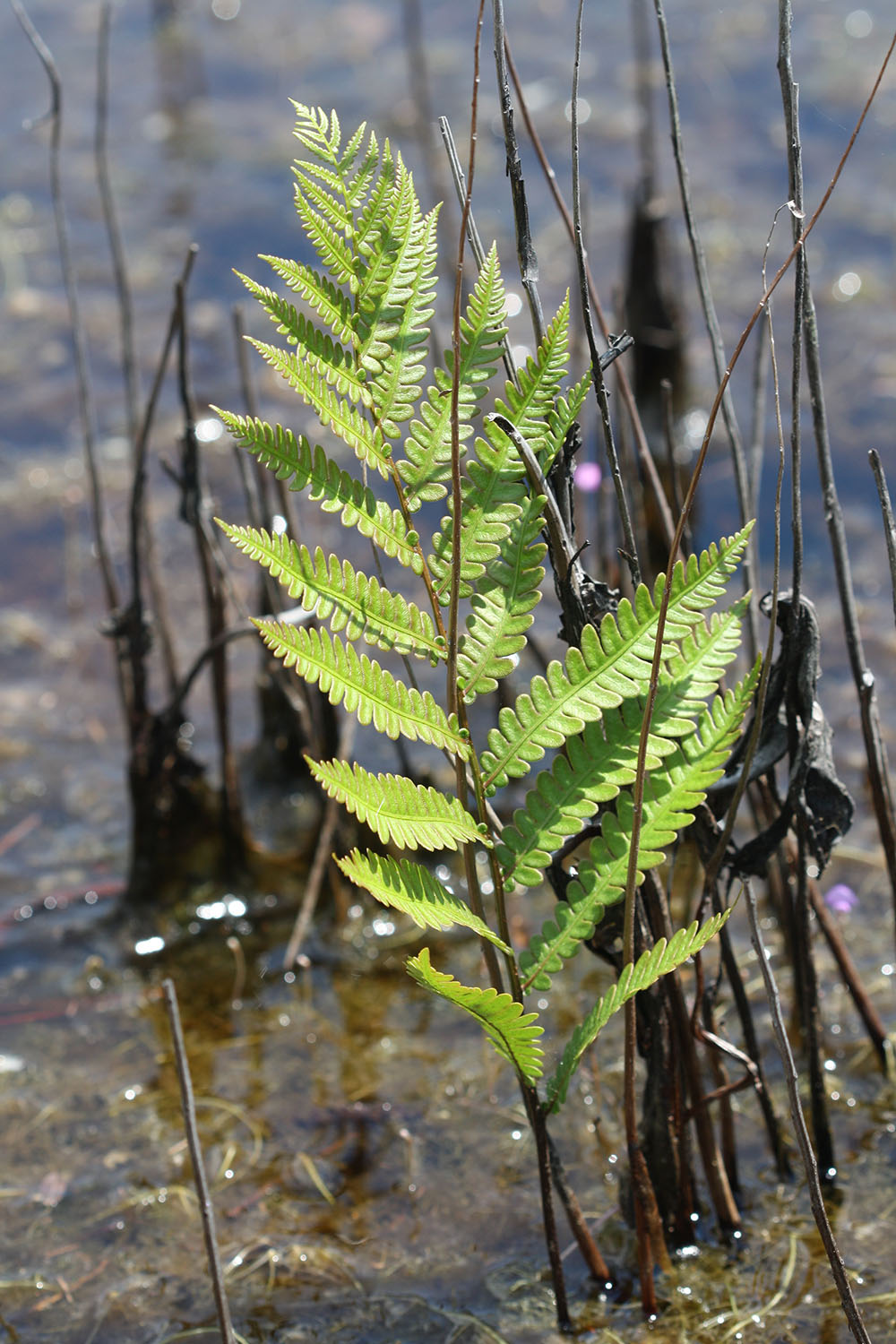

Anchistea virginica - Virginia chain fern (Blechnaceae). Bogs, depressions, bottomlands, pocosins. Mt: Uncommon; Pd: Uncommon; CP: Common. Note how the veinlets near the center of each pinnule come together to form slightly curved cells. |
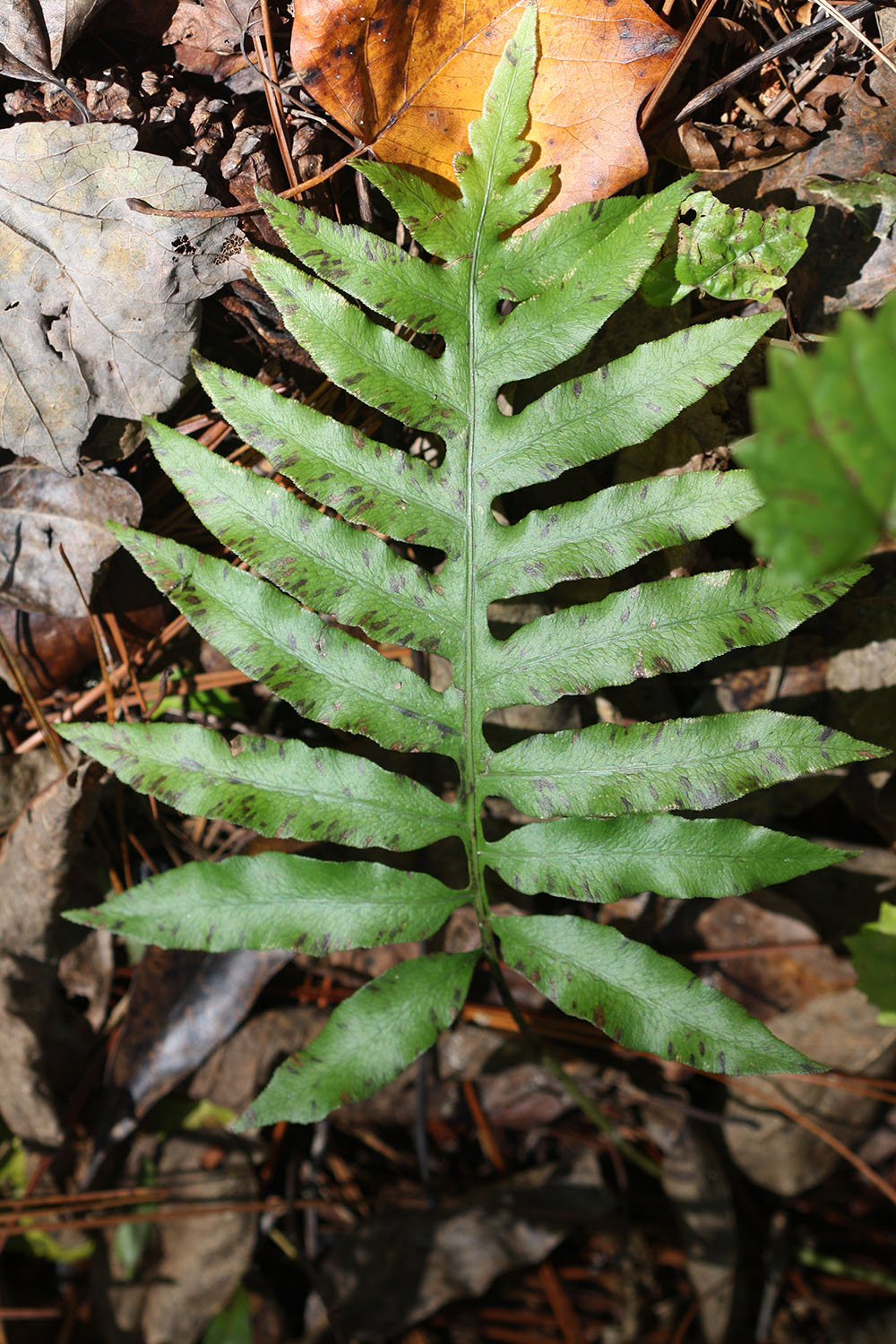

Lorinseria areolata - Netted chain fern (Blechnaceae). Bottomlands, moist forests, wetlands. Mt: Common; Pd: Common; CP: Common. Note that the pinna are usually borne in an alternate fashion on the rachis (in contrast to the superficially similar Onoclea sensibilis, in which the pinna are usually borne in an opposite fashion). |
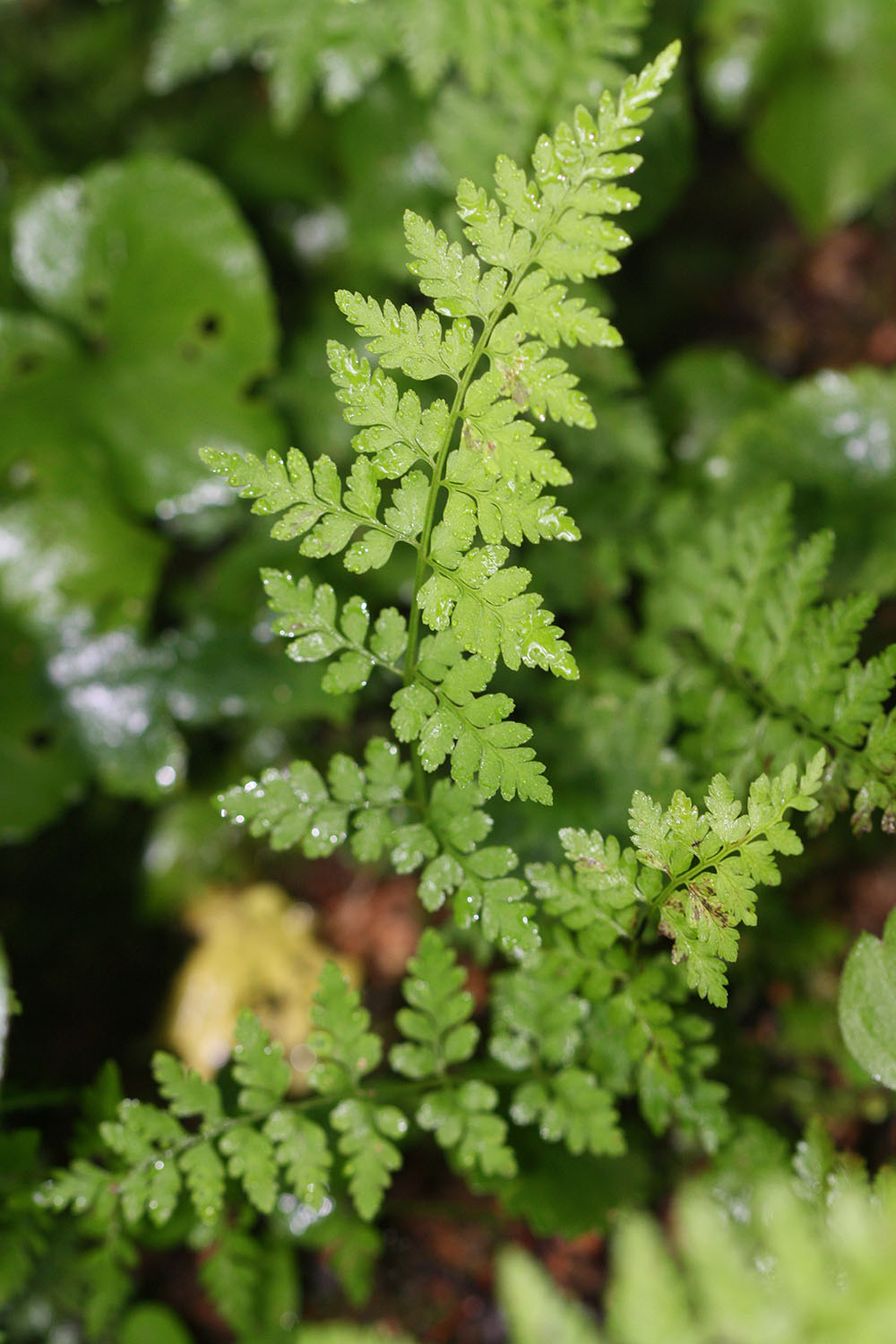
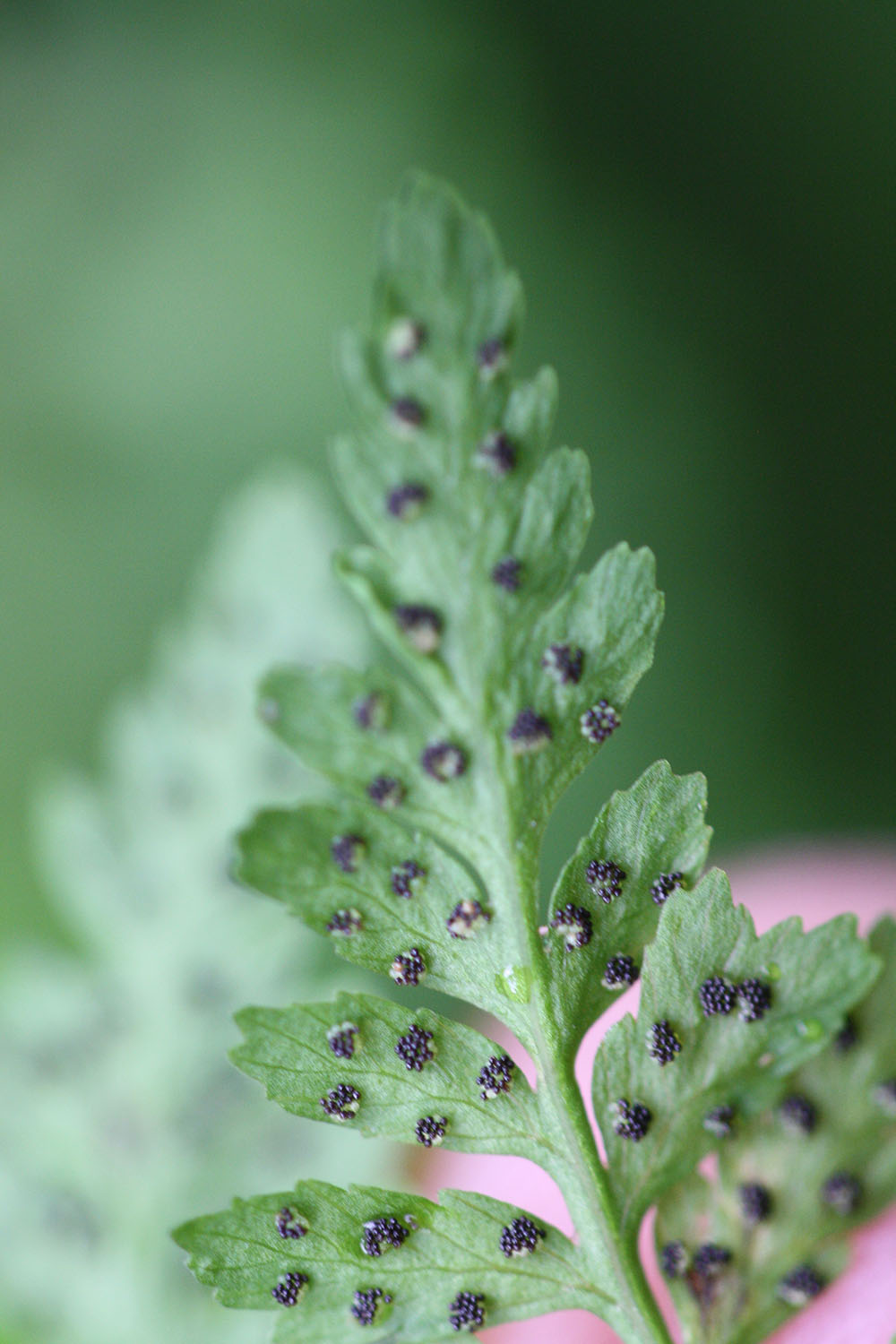
Cystopteris protrusa - Lowland bladder fern (Cystopteridaceae). Rich forests or boulder fields. Mt: Common; Pd: Uncommon; CP: Absent. Note that the veinlets reach the margins in this species (photo at right). Veinlets do not reach the margins in the superficially similar Woodsia obtusa. |
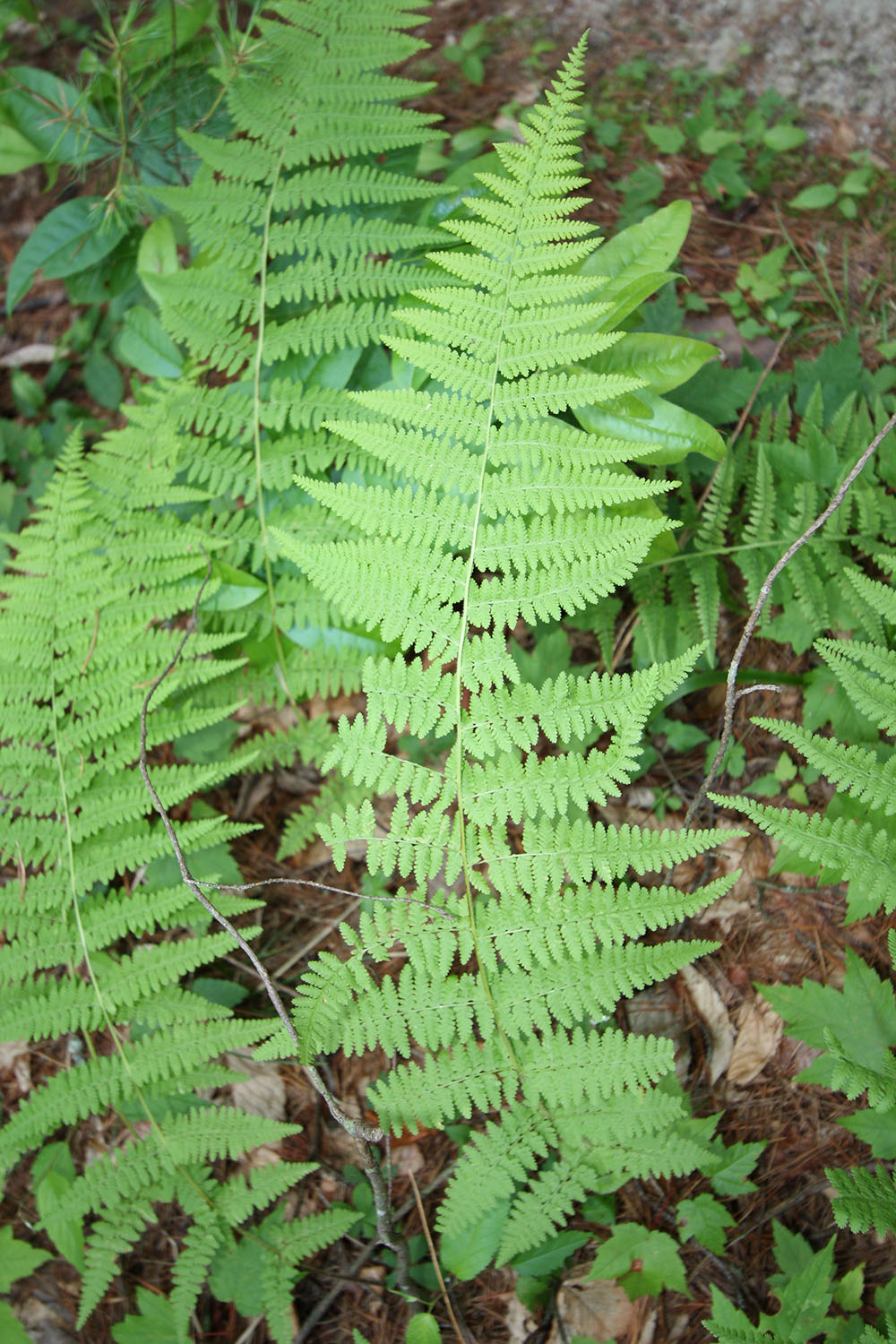
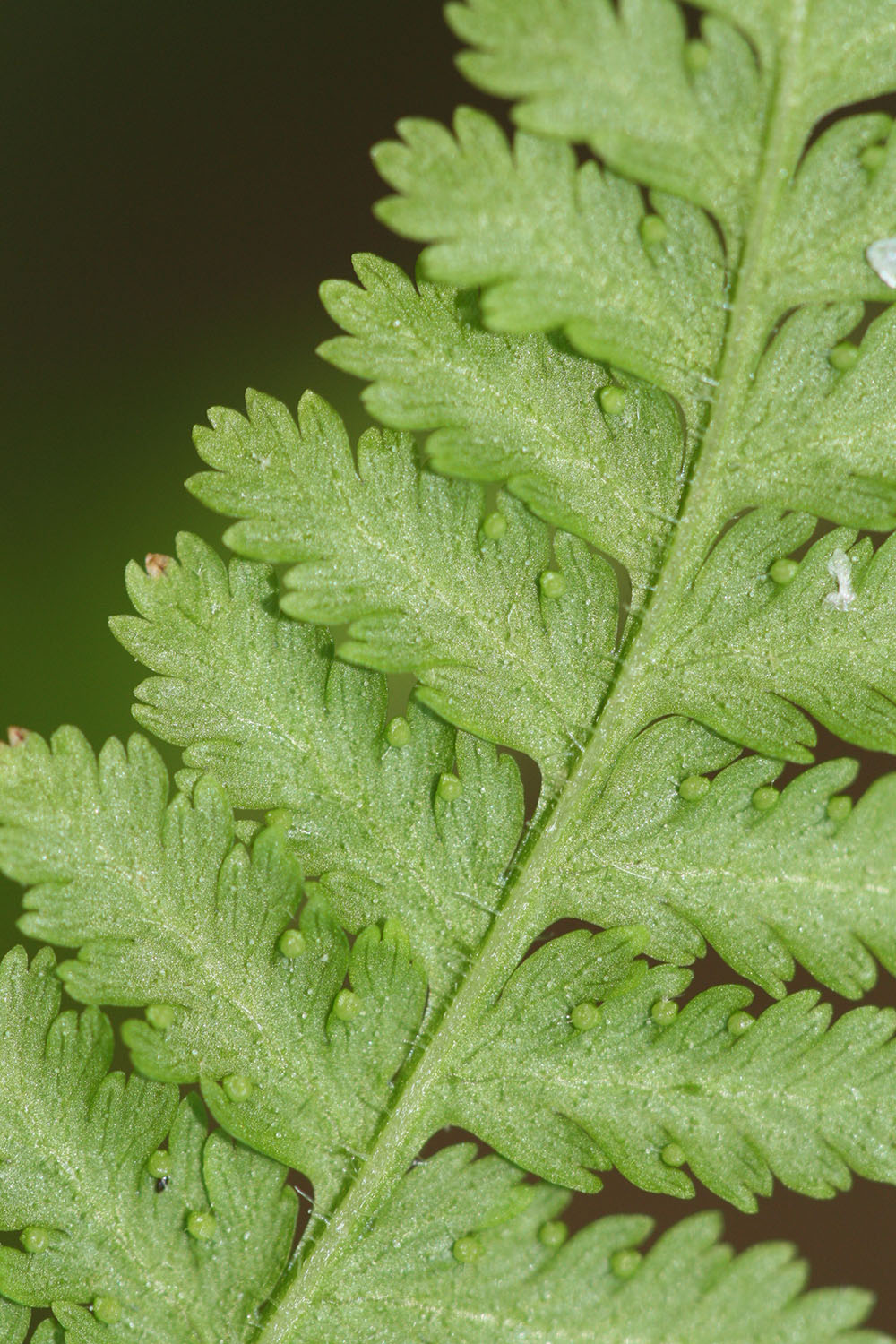
Dennstaedtia punctilobula - Hay-scented fern (Dennstaedtiaceae). Various habitats from rocky woods to outcrops and roadsides. Mt: Common; Pd: Uncommon; CP: Rare. This species shares doubly toothed pinnule margins with Athyrium asplenioides. However, in contrast to that species, D. punctilobula exhibits a conspicuously hairy rachis and costae, with stiff, spreading hairs. In addition, the pinnule margins are generally also more deeply toothed. |
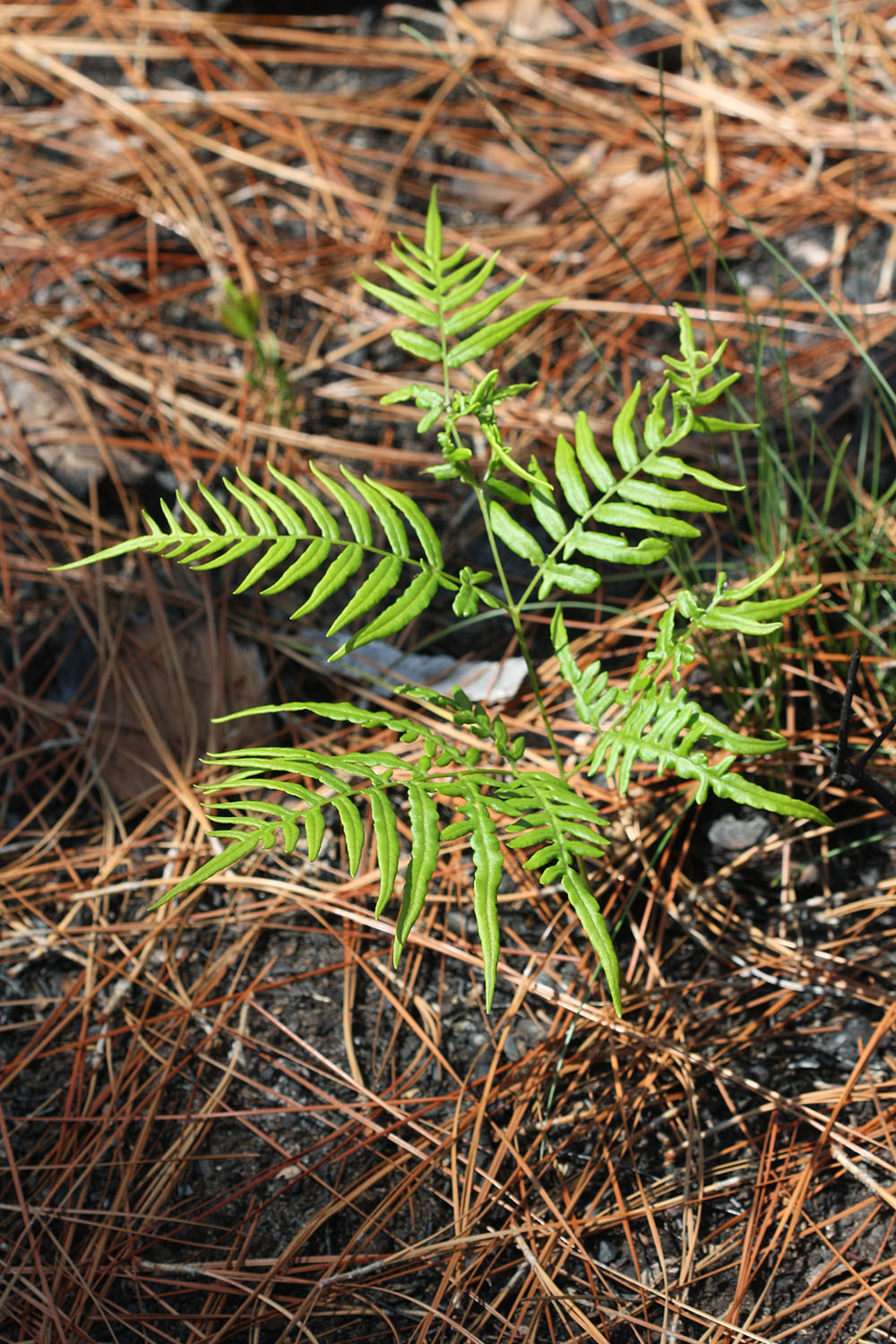
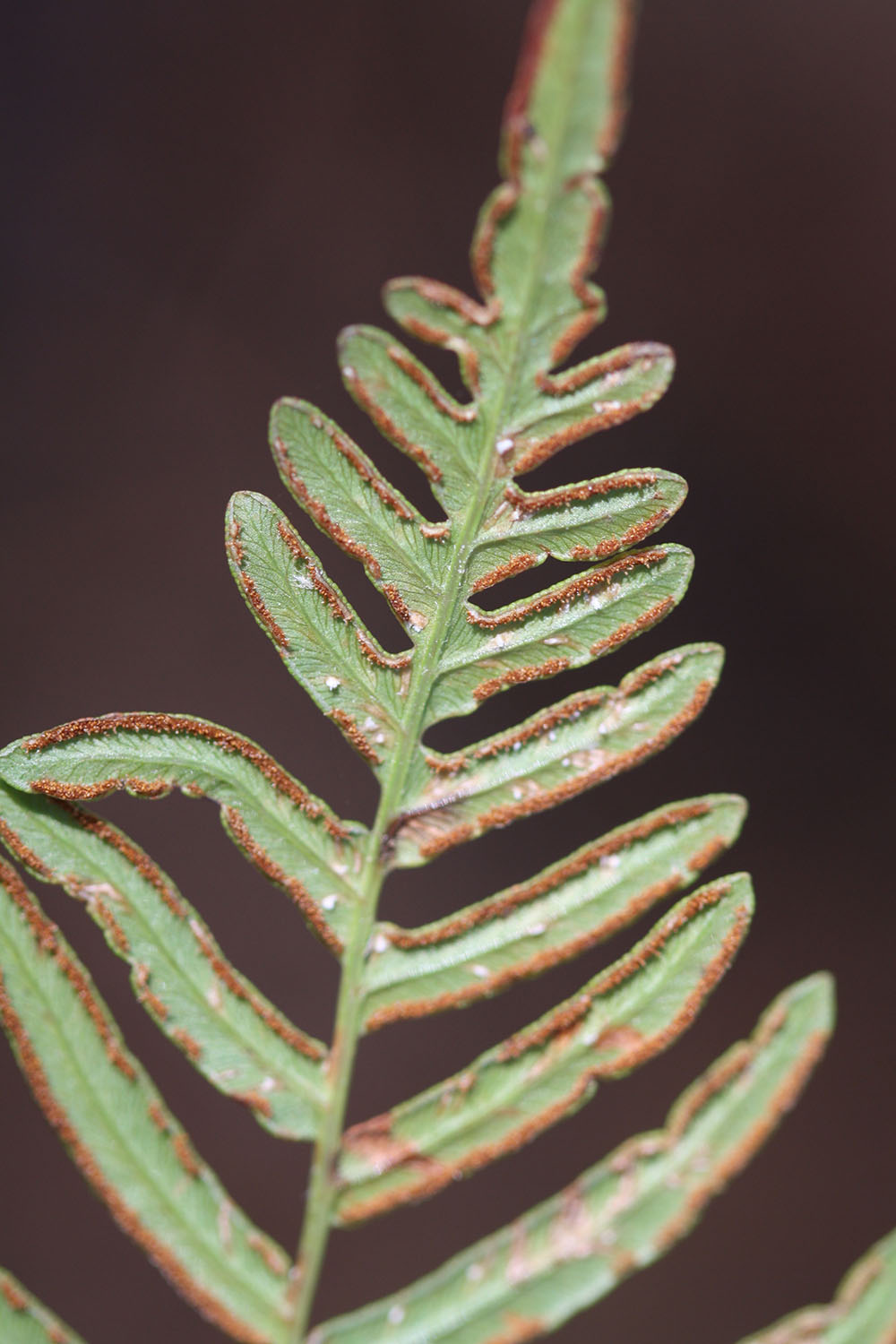
Pteridium aquilinum s.l. - Bracken fern (Dennstaedtiaceae). Dry forests, woodlands, flatwoods, and balds. Mt: Common; Pd: Common; CP: Uncommon. Some have begun to recognize the European element of this complex as P. aquilinum in a strict sense, applying the name P. latiusculum for the North American and eastern Asian element (see Weakley 2015). |
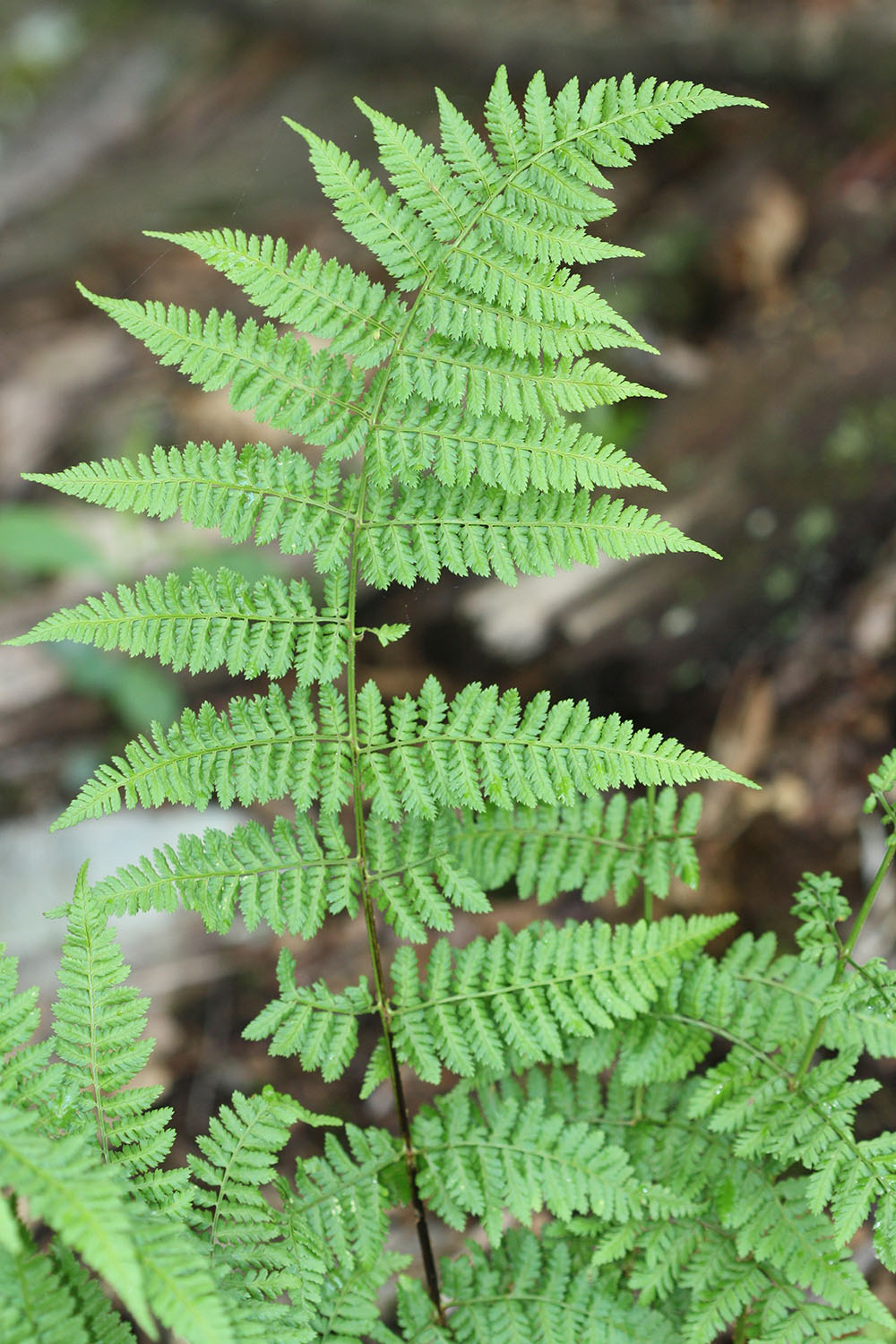
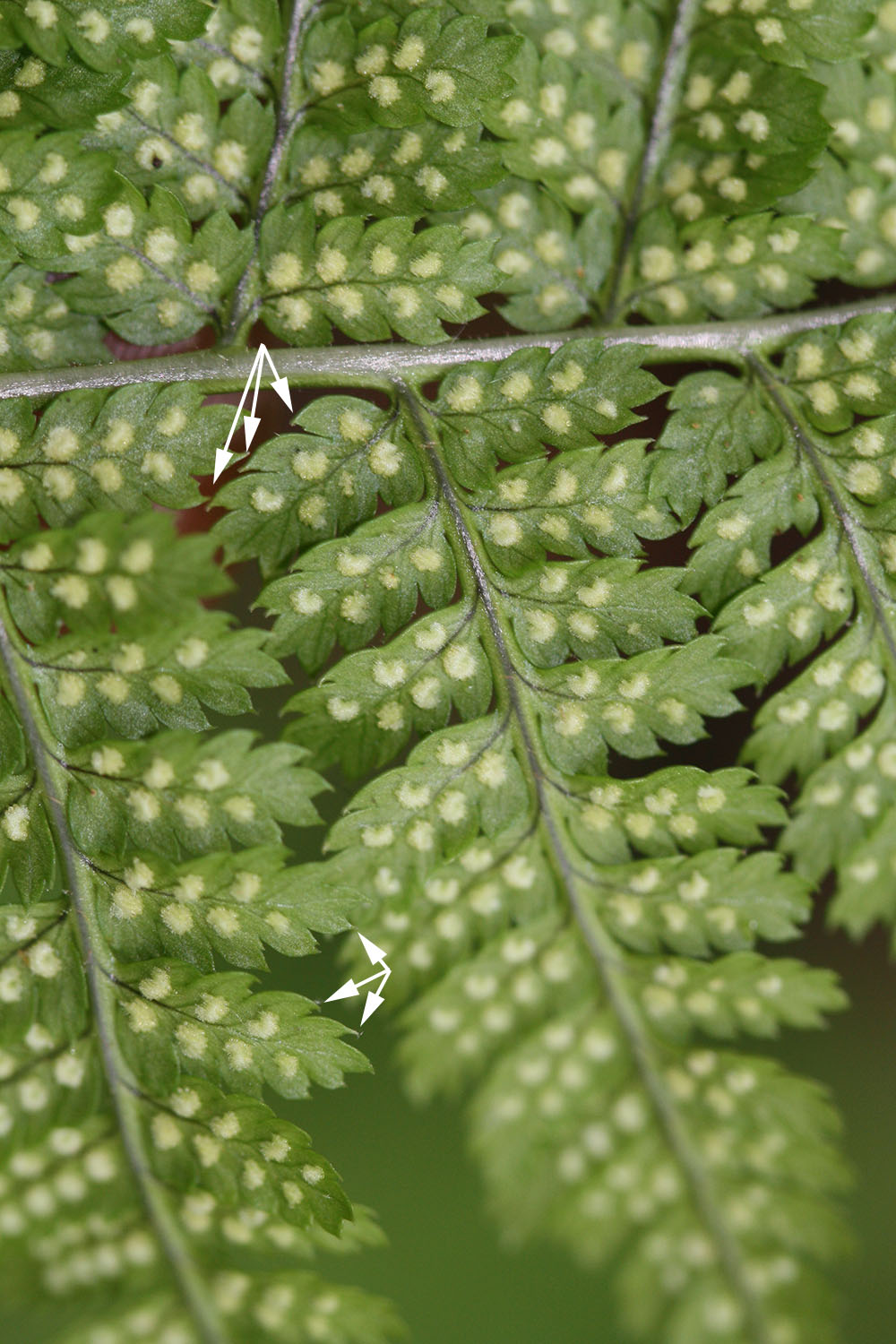
Dryopteris intermedia - Fancy fern (Dryopteridaceae). Moist forests. Mt: Common; Pd: Uncommon; CP: Rare. Note the sharp-tipped pinnule teeth (arrowed), a character state absent in Athyrium asplenioides and Dennstaedtia punctilobula. |
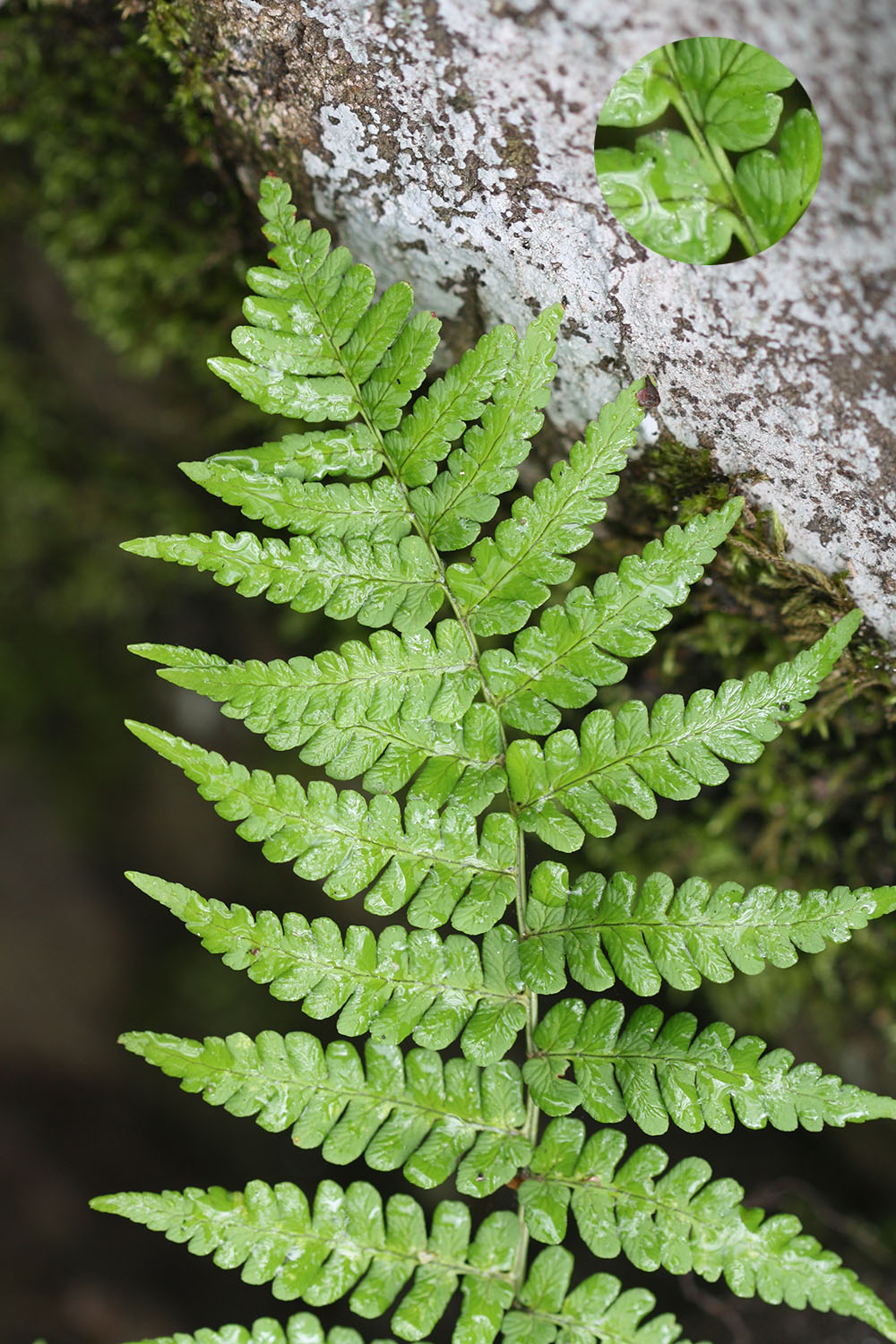
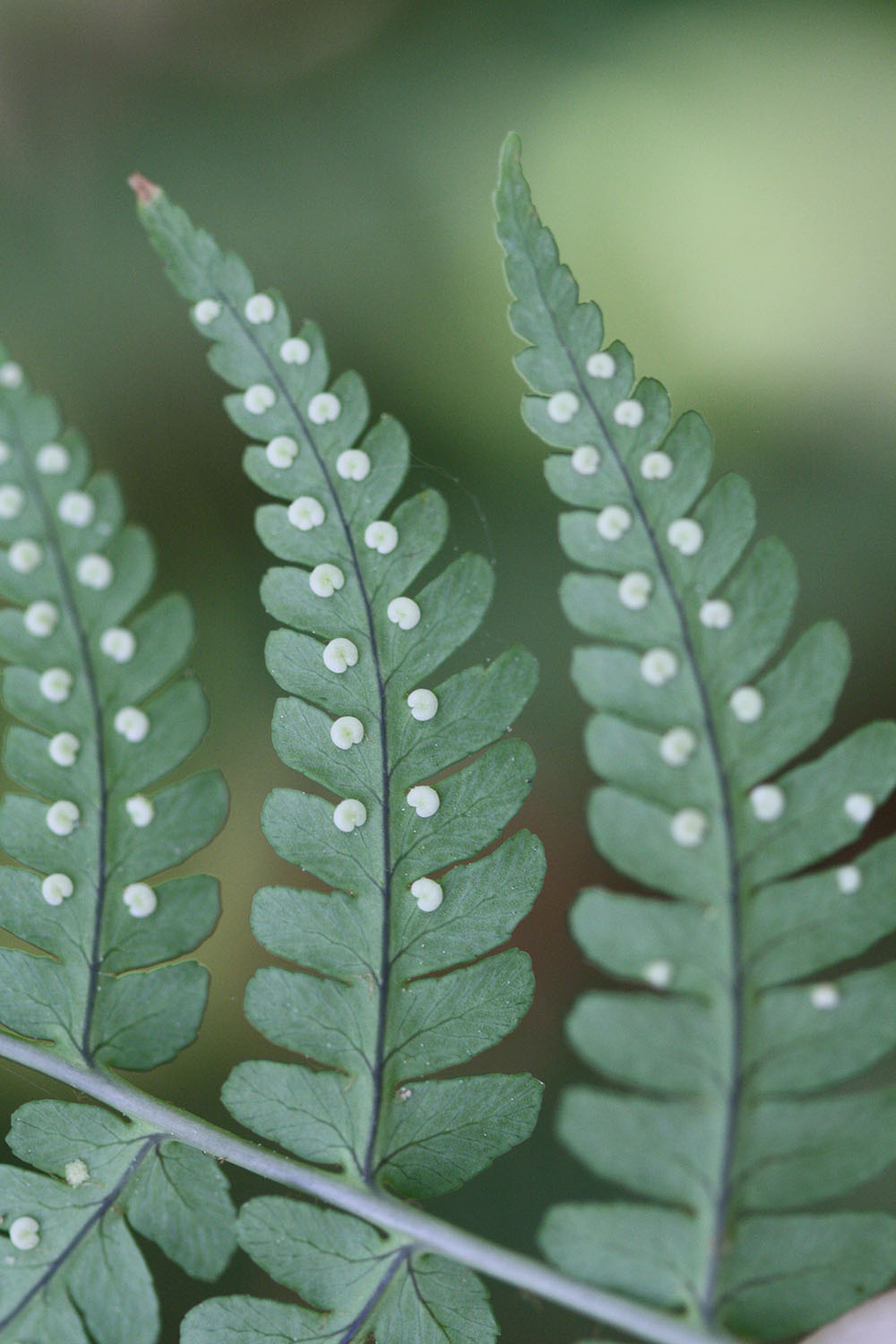
Dryopteris marginalis - Marginal wood-fern (Dryopteridaceae). Rocky/boulderfield forests. Mt: Common; Pd: Uncommon; CP: Rare. As in Athyrium asplenioides (but in contrast to Deparia acrostichoides), the rachis groove is continuous with that of the costa (inset). In contrast to Athyrium asplenioides, the pinnule margins are only singly toothed (doubly so in A. asplenioides). |
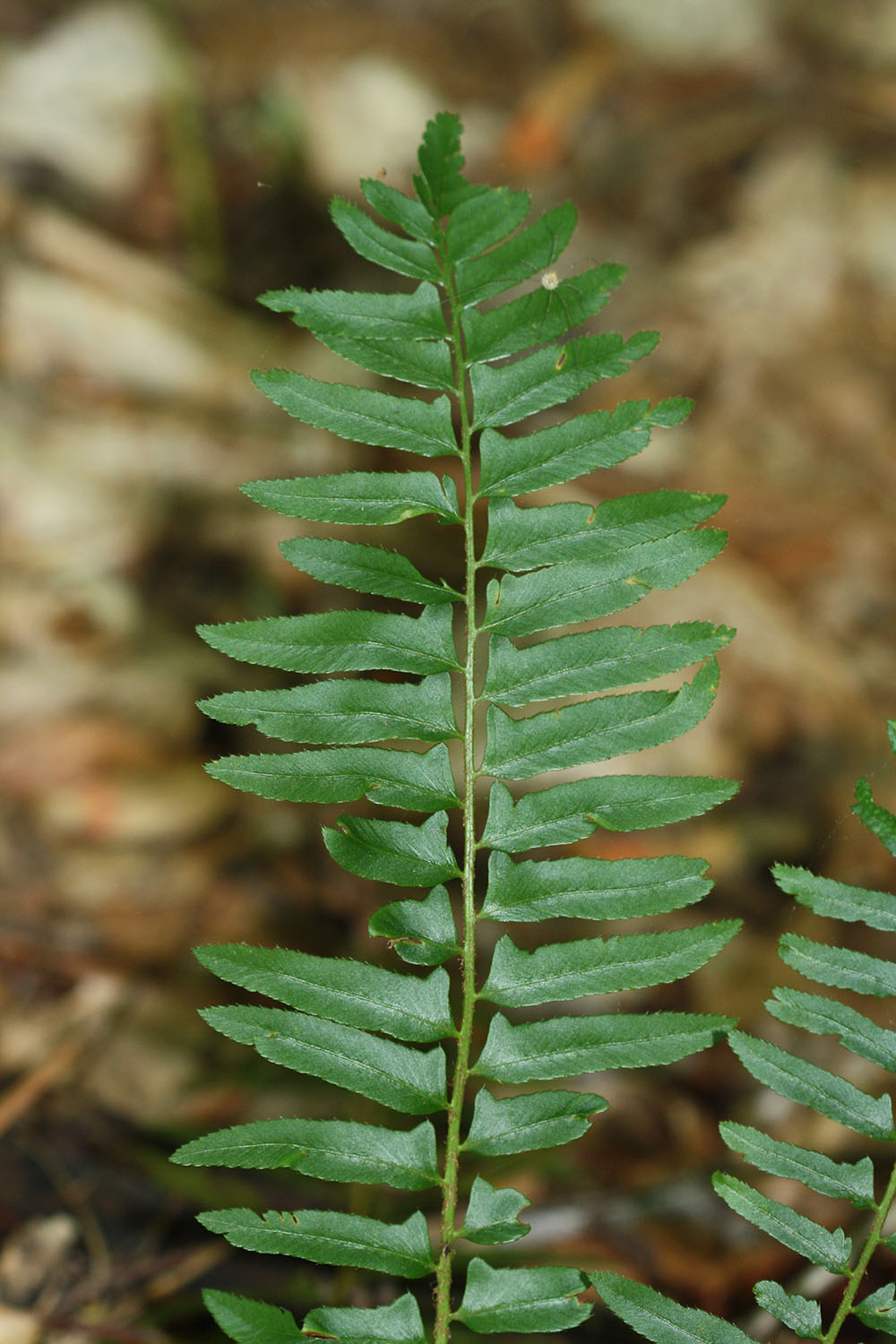
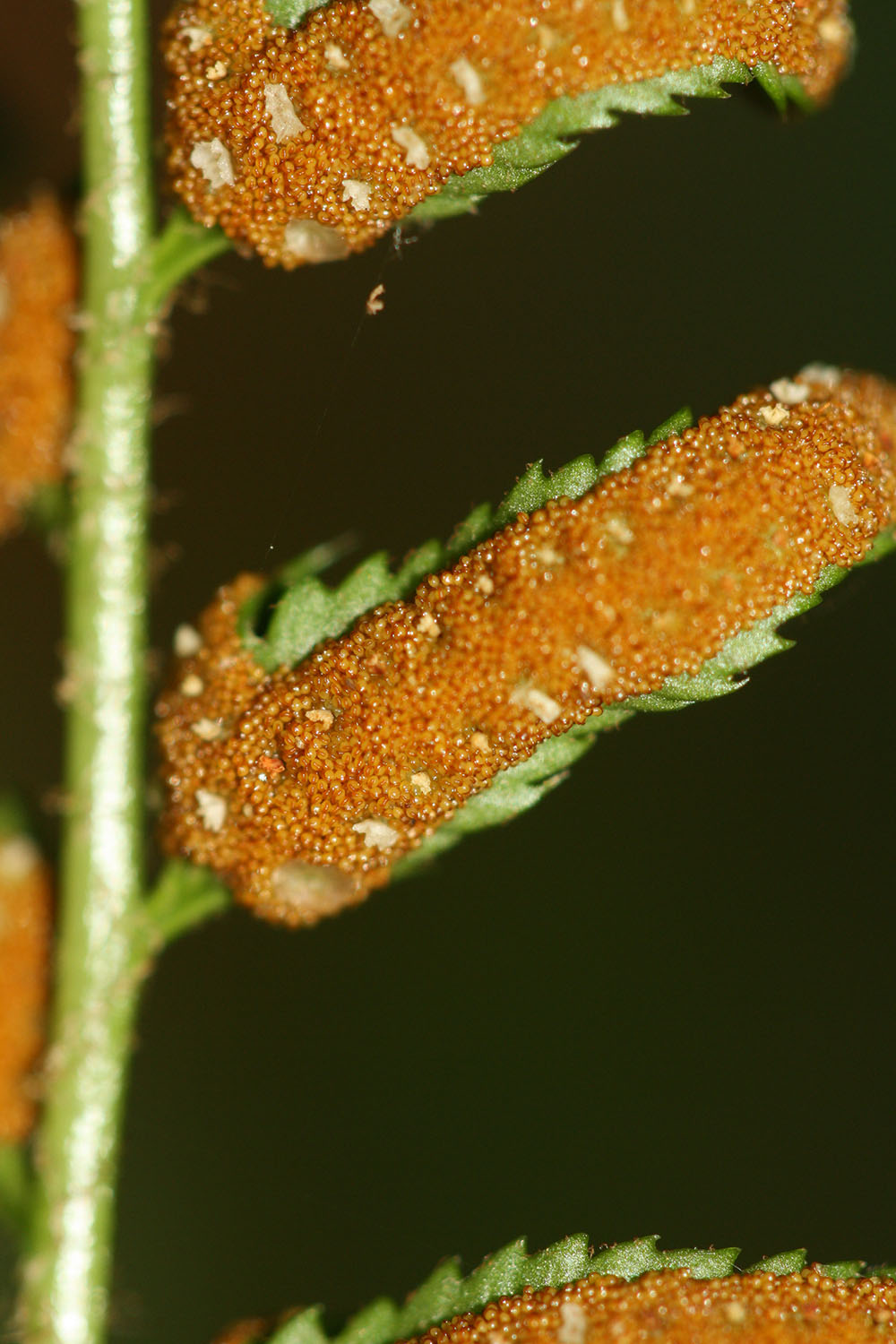
|
Polystichum acrostichoides - Christmas fern (Dryopteridaceae). Moist to dry forests. Mt: Common; Pd: Common; CP: Common. Note that Asplenium platyneuron and A. trichomanes also exhibit a single strong lobe at the base of each pinna, however these species exhibit a dark-reddish to black rachis, whereas P. acrostichoides exhibits a greenish rachis. |

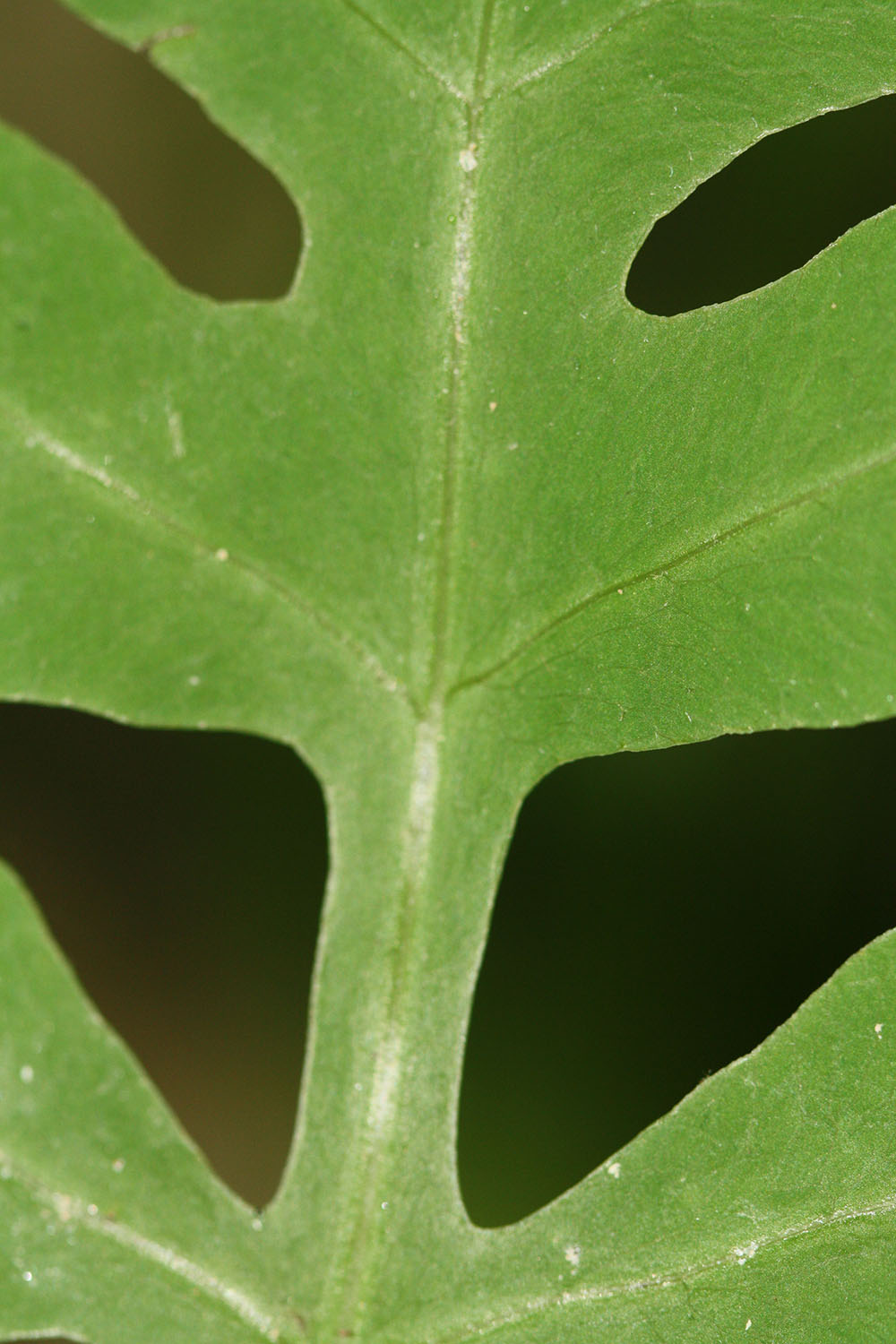
Onoclea sensibilis - Sensitive fern (Onocleaceae). Moist forests, wetlands. Mt: Common; Pd: Common; CP: Common. Note that the pinna are usually borne in an opposite fashion on the rachis (in contrast to the superficially similar Lorinseria areolata, in which the pinna are usually borne in an alternate fashion). Note also that the pinna margins become increasingly scalloped, moving from top of the frond to the base. |
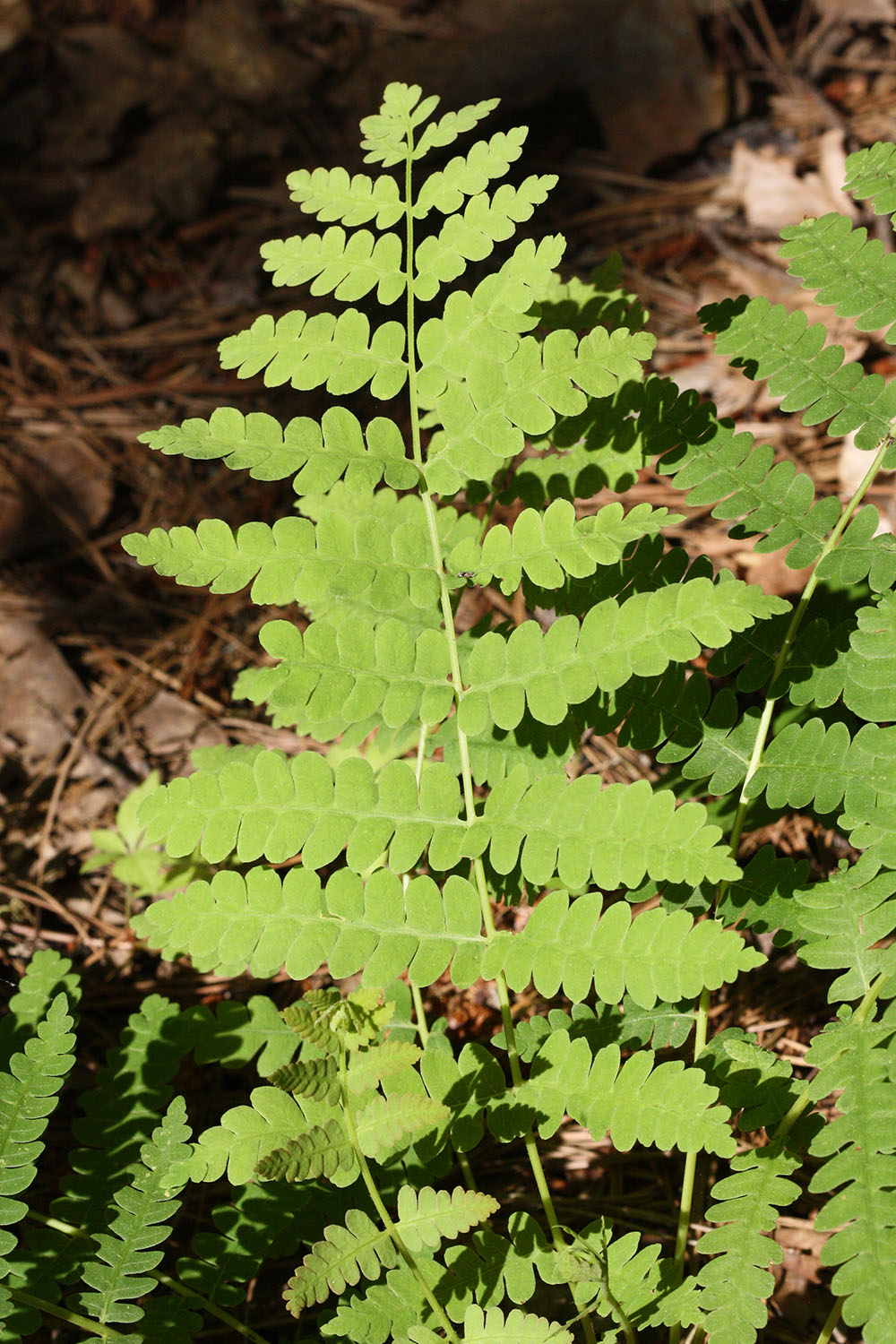
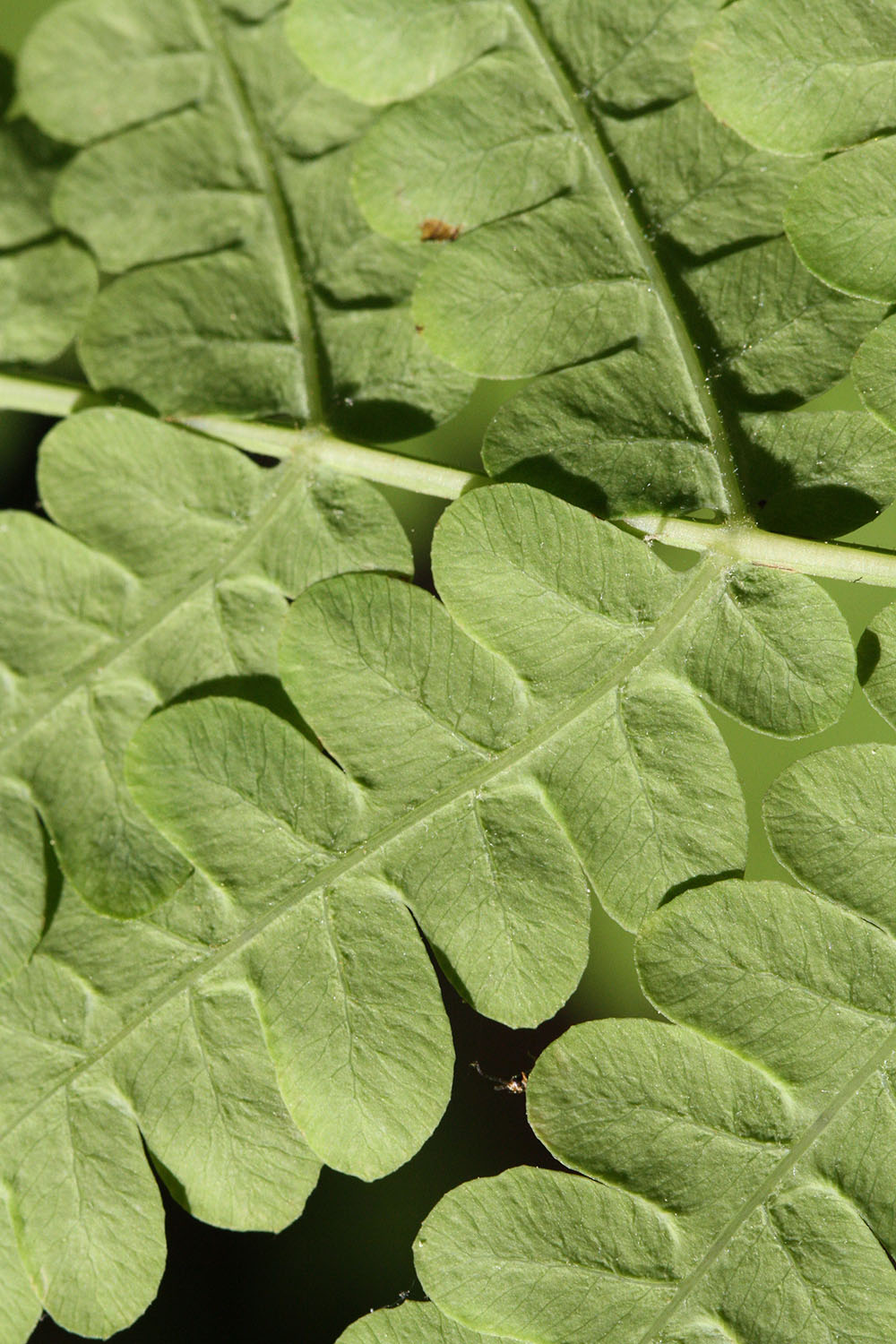
Osmunda claytoniana - Interrupted fern (Osmundaceae). Moist to dry forest, woodlands, and balds. Mt: Common; Pd: Rare; CP: Absent. Note that the veinlets have a "wishbone" appearance, a character state shared with Osmundastrum cinnamomea (see below) and Thelypteris palustris. However, the pinnules are much narrower and not as broadly rounded in both of these species. In addition, the veinlets near the tip of the pinnules are often twice divided in O. claytoniana, whereas in T. palustris, they are divided only once or not at all. |
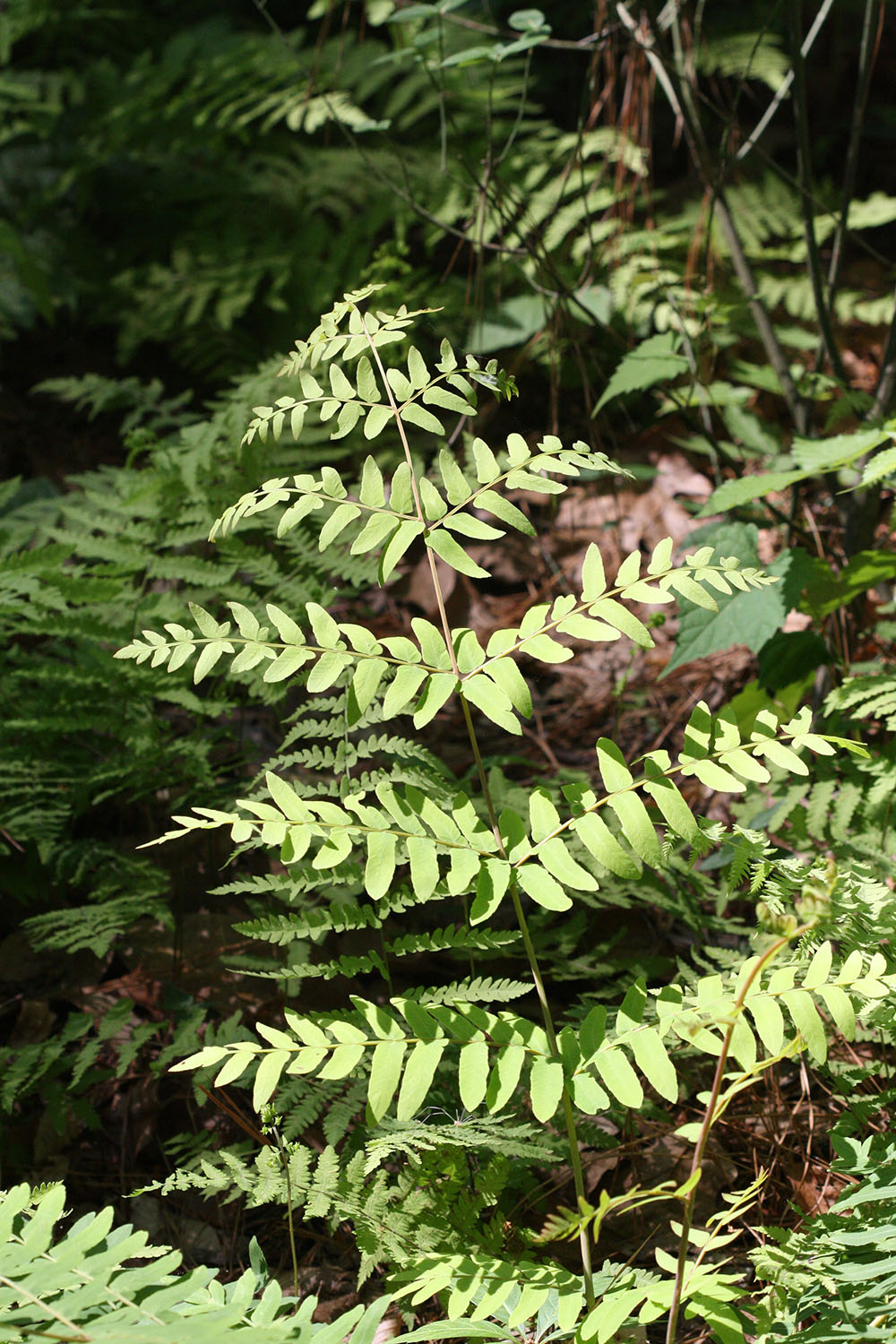

Osmunda spectabilis - American royal fern (Osmundaceae). Bottomlands, moist forests, wetlands. Mt: Common; Pd: Common; CP: Common. Fronds are conspicuously bipinnate (each pinna divided into distinct pinnules, these with many, minute teeth). |
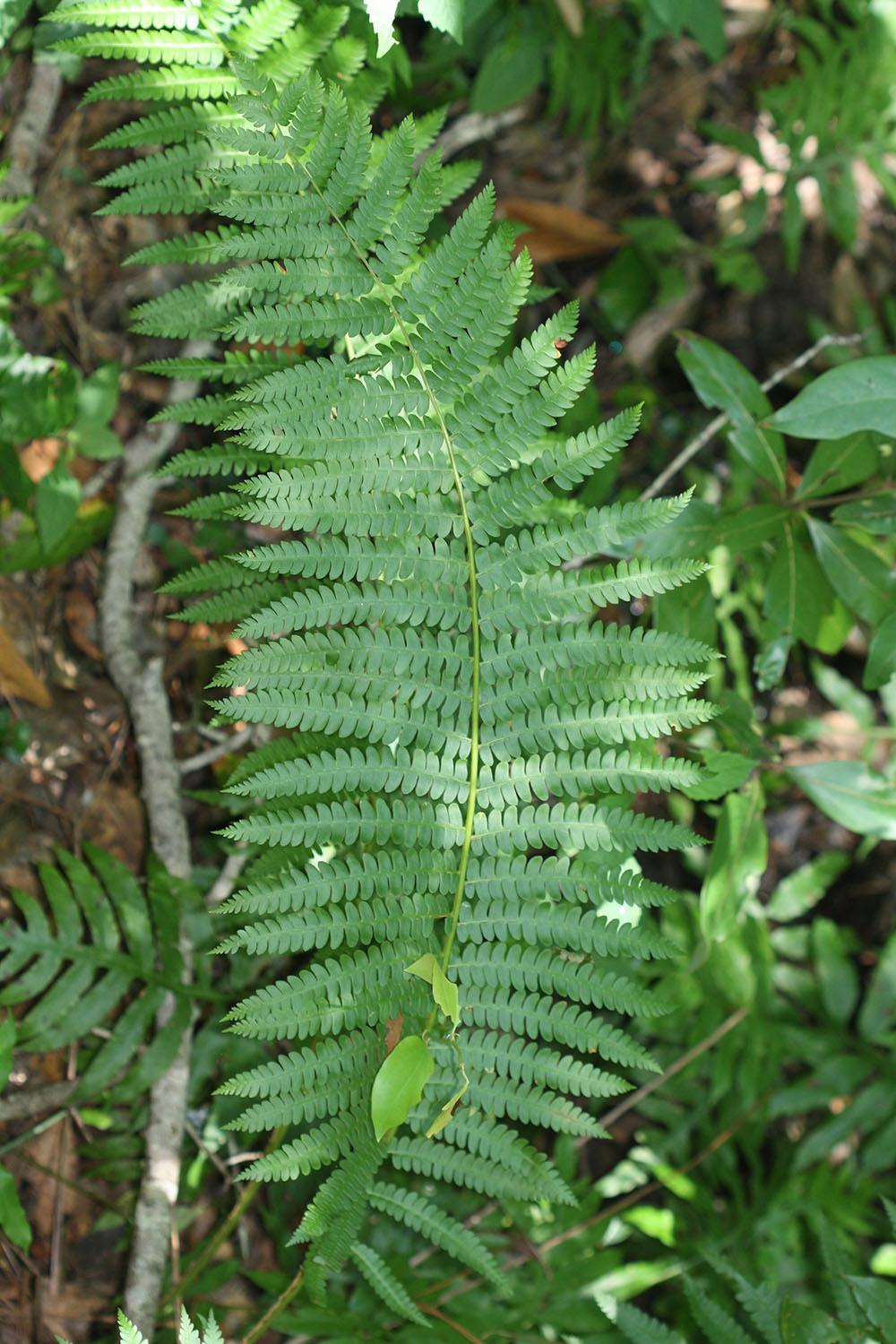

Osmundastrum cinnamomea - Cinnamon fern (Osmundaceae). Bottomlands, bogs, pocosins, wetlands. Mt: Common; Pd: Common; CP: Common. Note that the veinlets have a "wishbone" appearance, branching once before reaching the margin. This character state is shared with Osmunda claytoniana and Thelypteris palustris. However, note the presence of curly hairs in O. cinnamomea. |
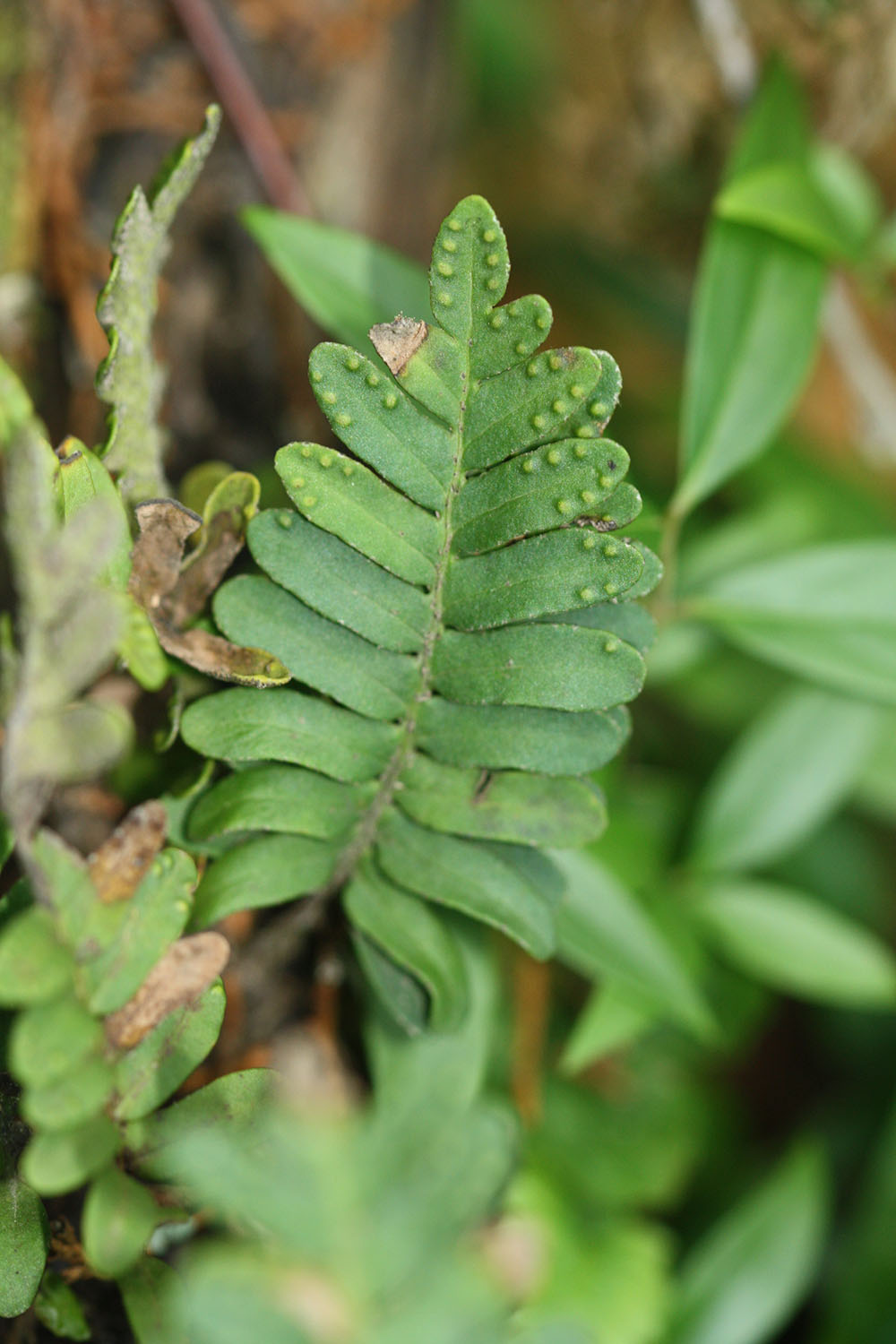
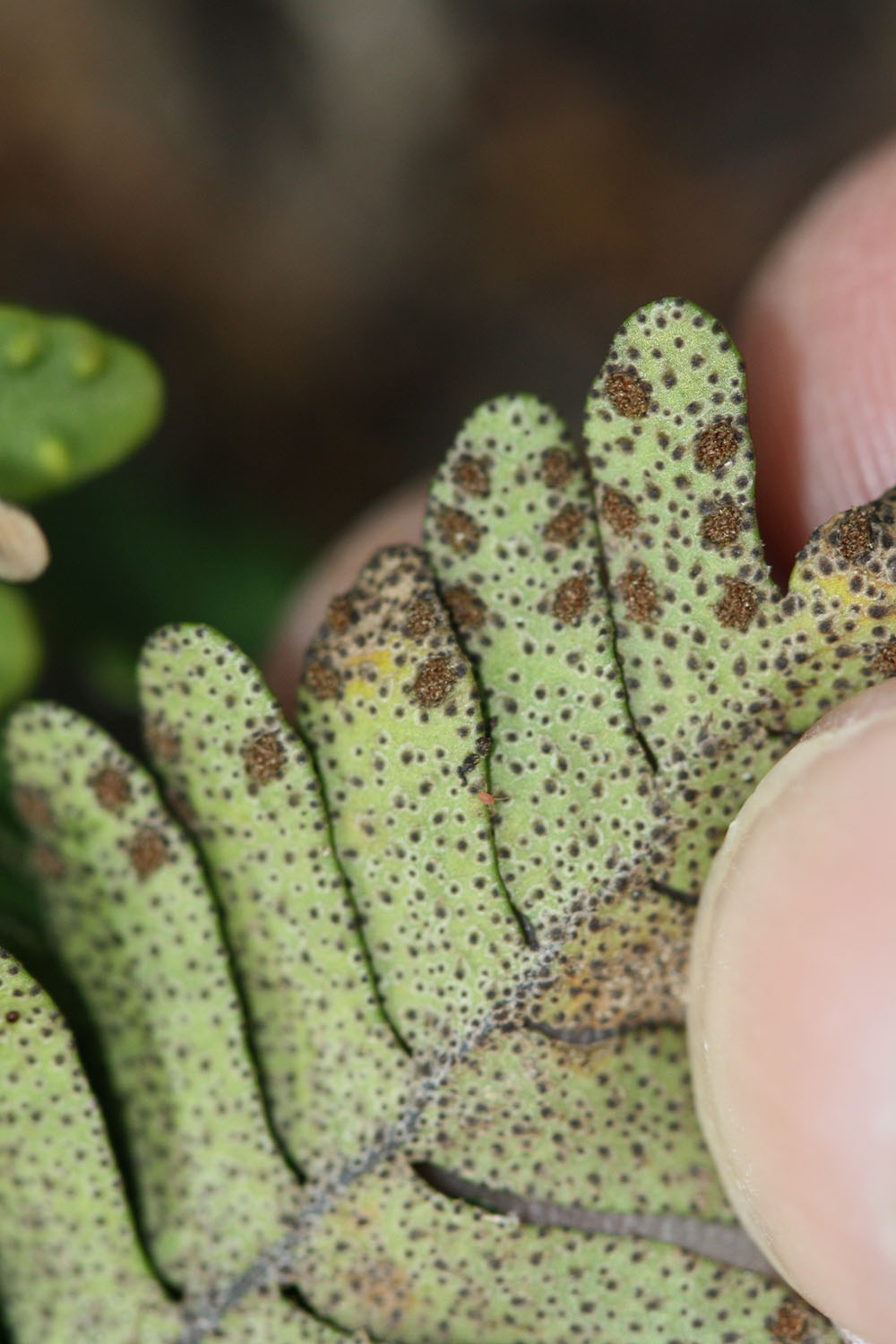
Pleopeltis michauxiana - Resurrection fern (Polypodiaceae). Logs and outcrops. Mt: Common; Pd: Common; CP: Common. The frond shape is similar to Polypodium virginianum s.l. (see below), but that species lacks the rust-colored dots evident in Pleopeltis michauxiana. |
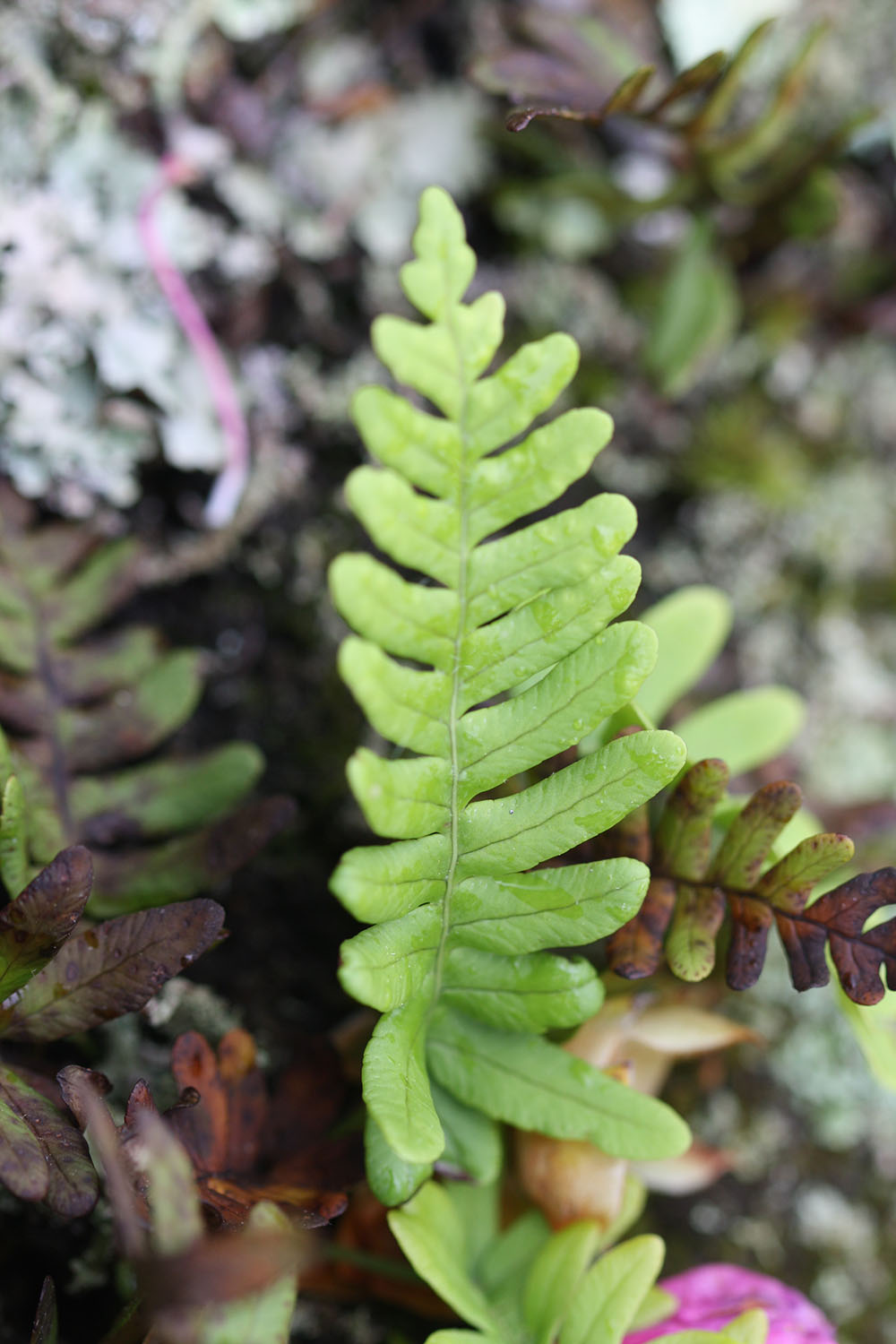
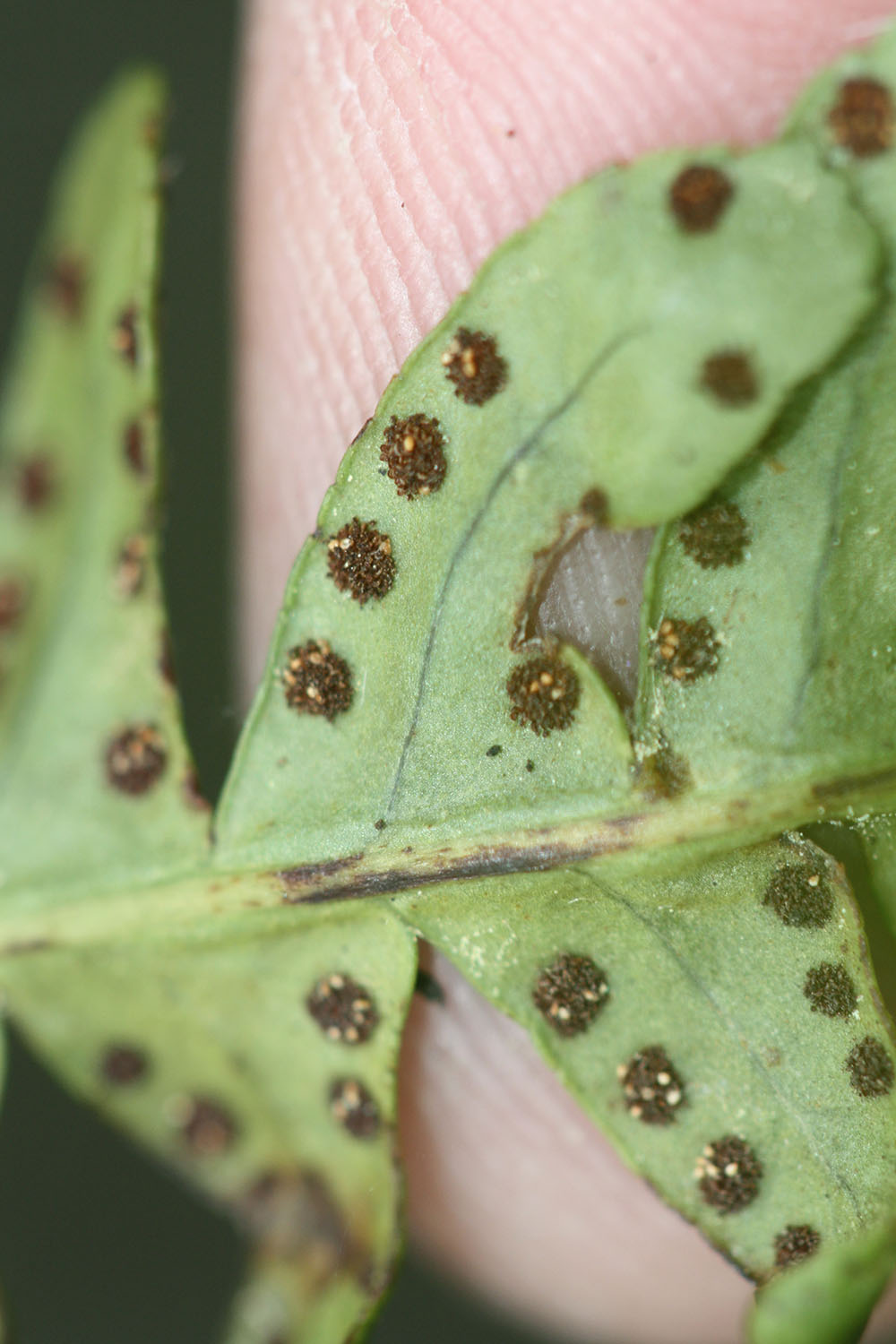
Polypodium virginianum s.l. - Rockcap fern (Polypodiaceae). Moist outcrops. Mt: Common; Pd: Common; CP: Uncommon. More than one cryptic species has been recognized in this complex (see Weakley 2015), but due to the difficulty of determining species in the field, a single broad species (s.l. = sensu lato or in the "broad sense") is recognized here as a starting point to getting to know the complex. Note the absence of rust-colored dots (these present in the superficially similar Pleopeltis michauxiana). |
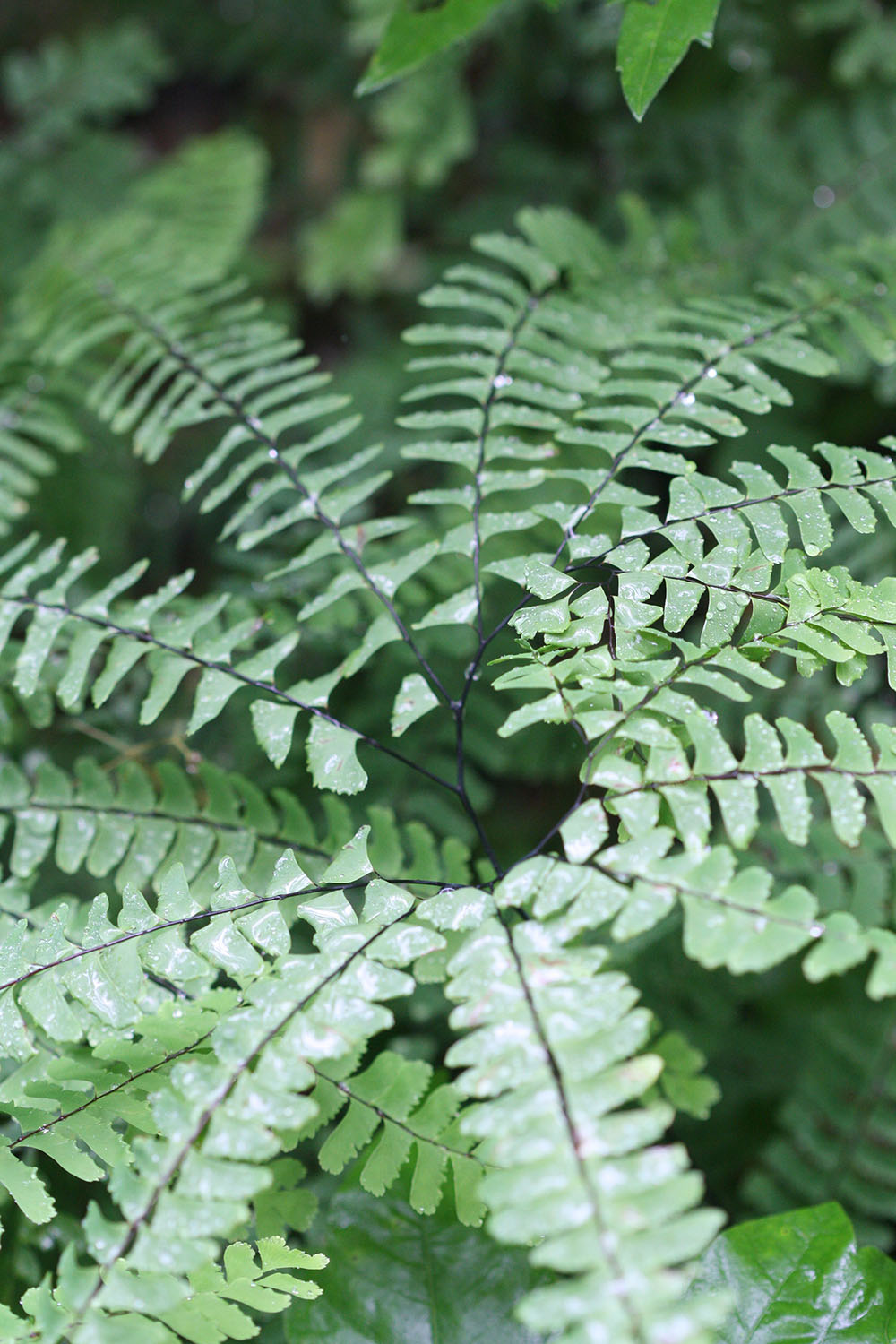
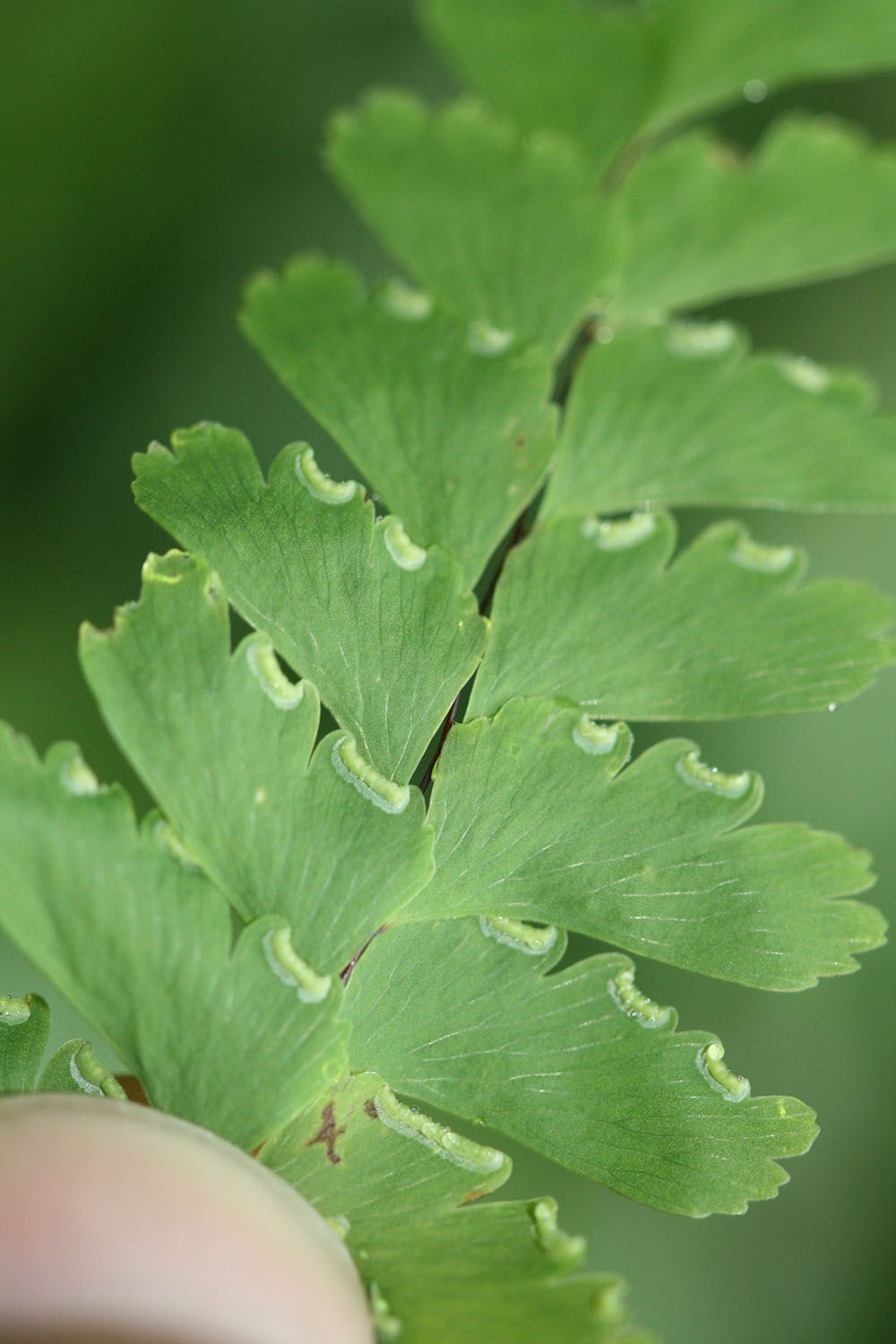
|
|
Adiantum pedatum - Northern maidenhair (Pteridaceae). Moist forests and cliffs. Mt: Common; Pd: Uncommon; CP: Rare. The branching pattern of the frond is unique among the ferns in our flora. |
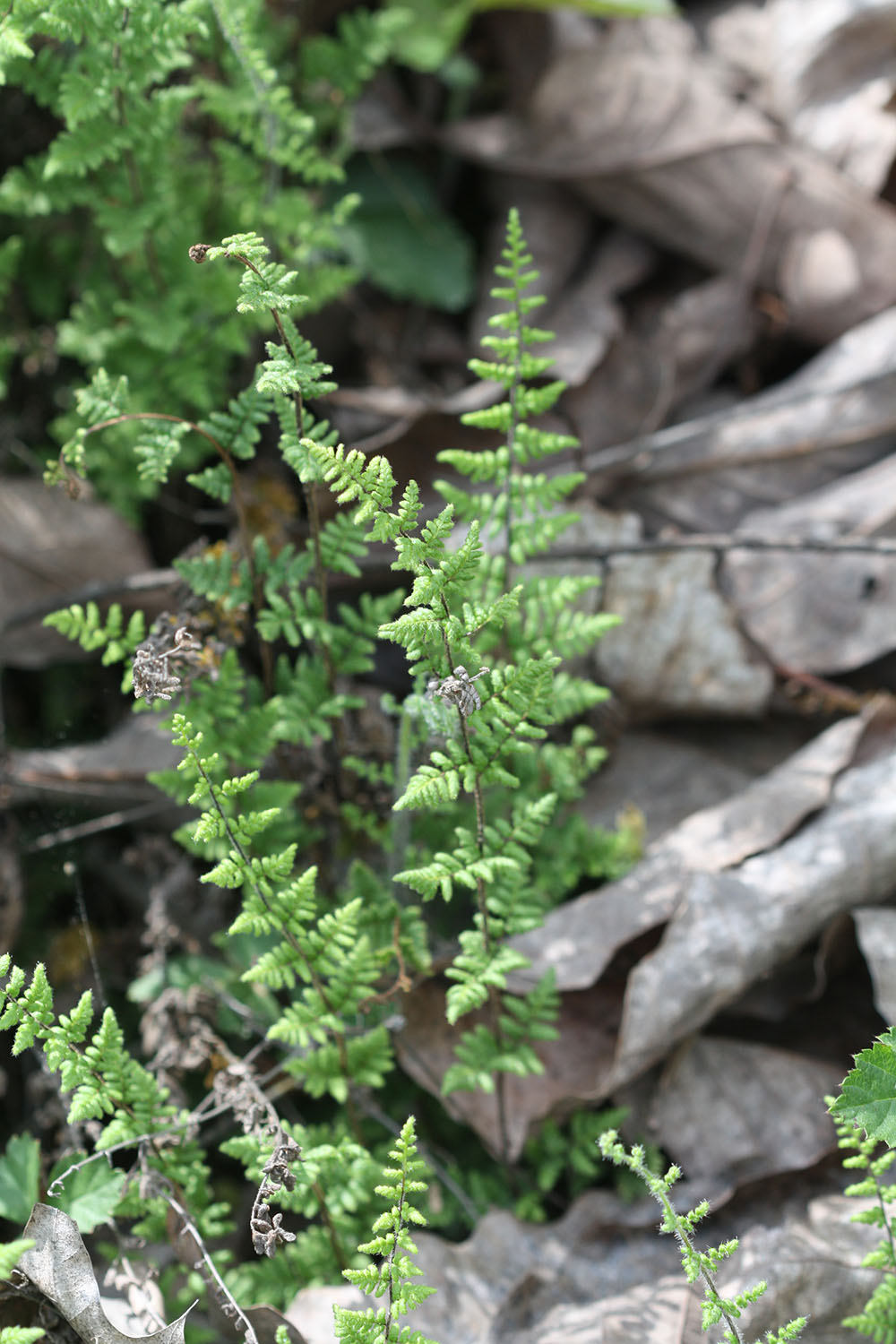
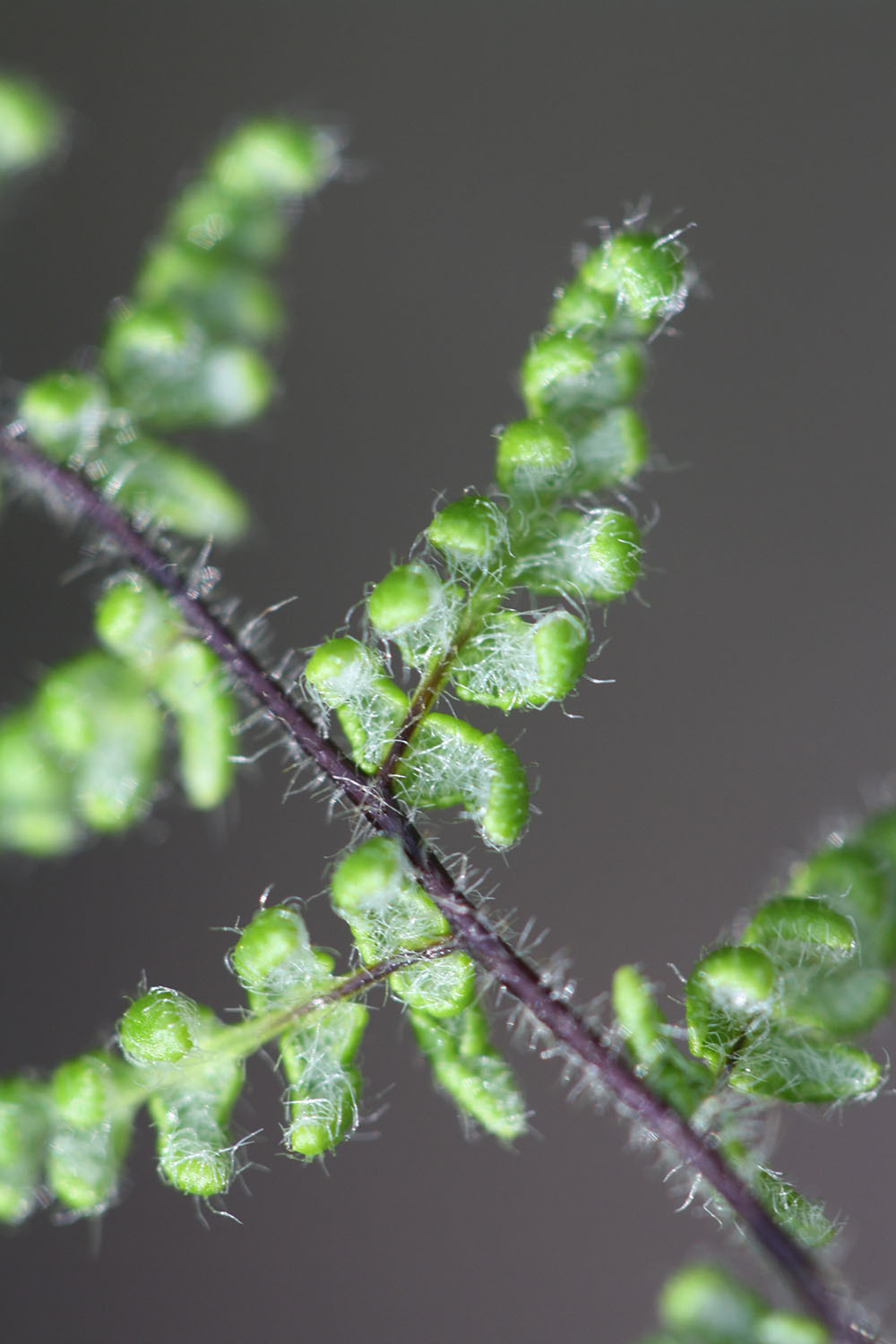
Myriopteris lanosa - Hairy lipfern (Pteridaceae). Dry outcrops. Mt: Common; Pd: Uncommon; CP: Absent. The long hairs on the rachis and pinnae help distinguish this species from Cystopteris protrusa and Woodsia obtusa. |
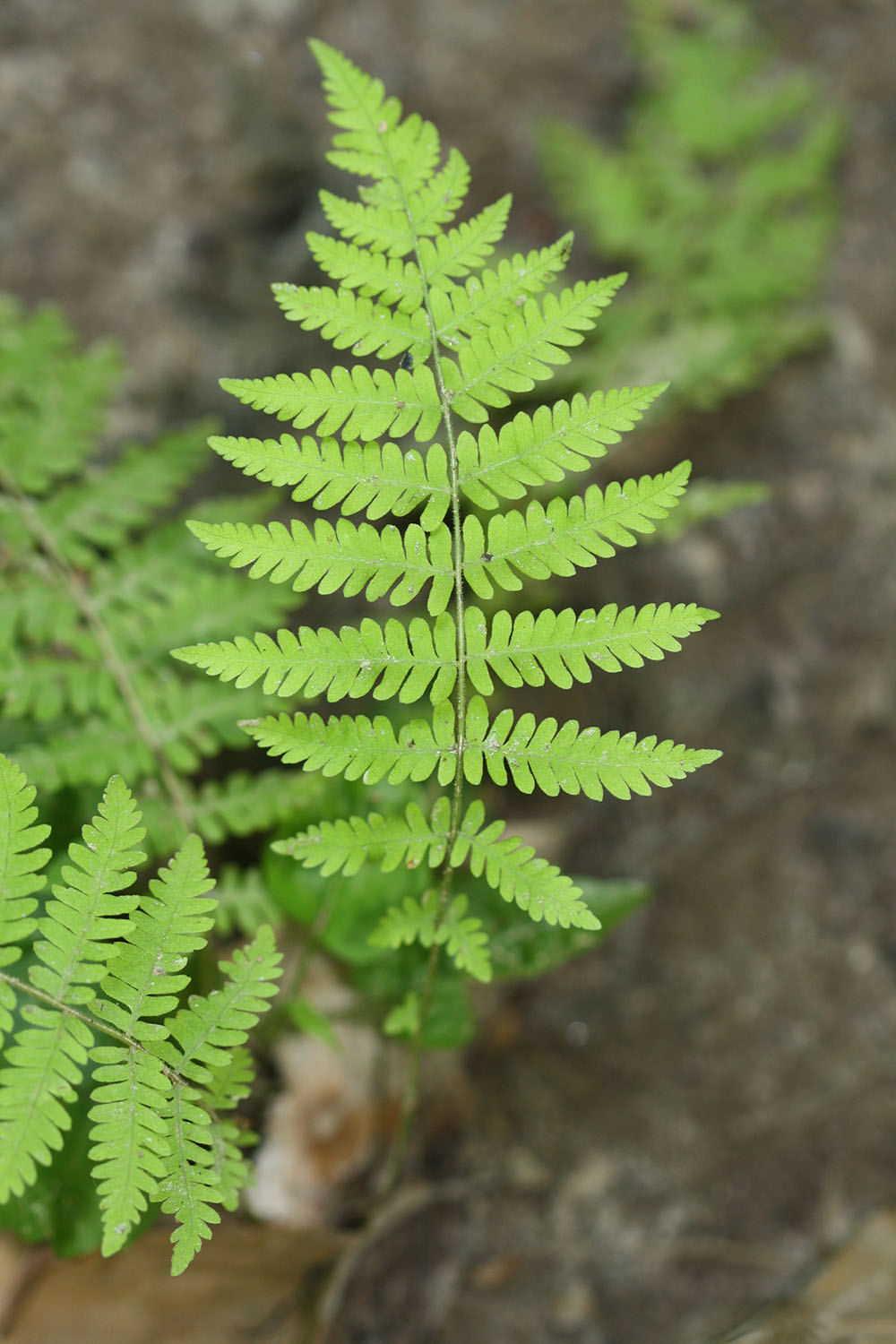

Parathelypteris noveboracensis - New York fern (Thelypteridaceae). Bottomlands, moist forests, bogs. Mt: Common; Pd: Common; CP: Uncommon. Note the elliptic shape of the frond, with a more or less even taper from the middle to the tip and base. In addition, note the relatively long pinnule marginal hairs, as well as that the veinlets rarely, if at all, branch before reaching the margin. |
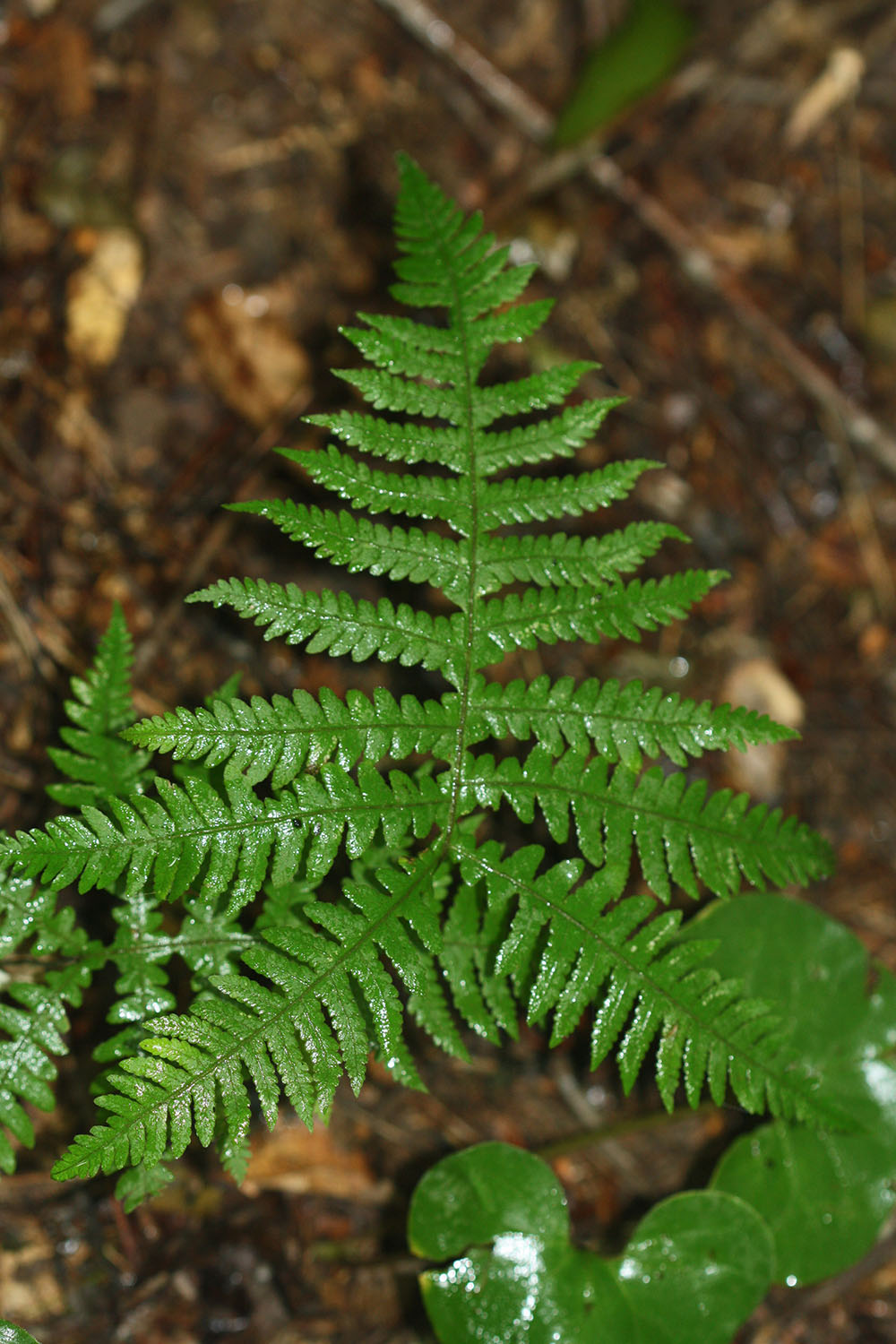

Phegopteris hexagonoptera - Broad beech fern (Thelypteridaceae). Moist forests. Mt: Common; Pd: Common; CP: Uncommon. Note the differential orientation of the basalmost pinna pair, compared to the other pinnae. A triangular shape to the frond is typical for the species. |
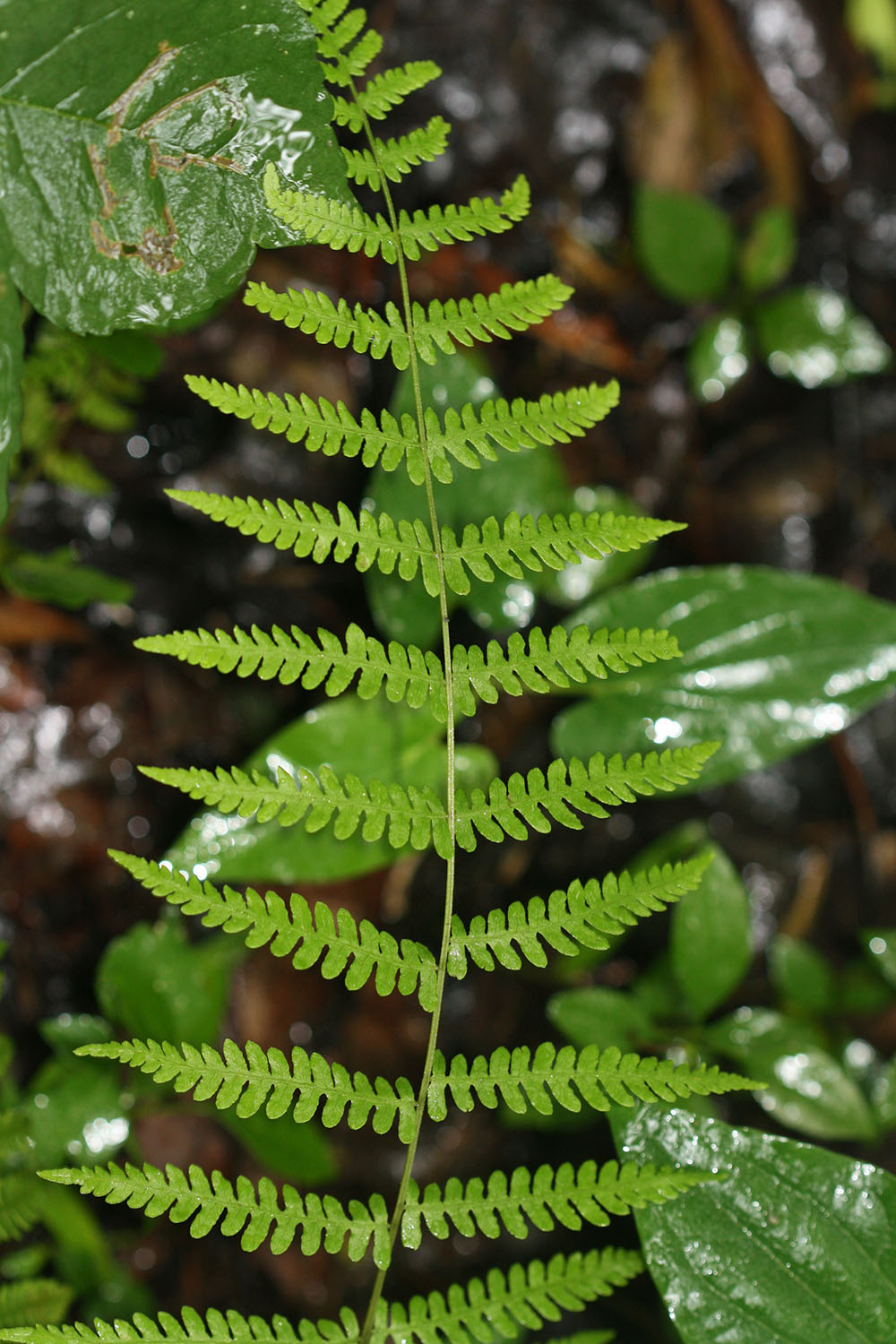
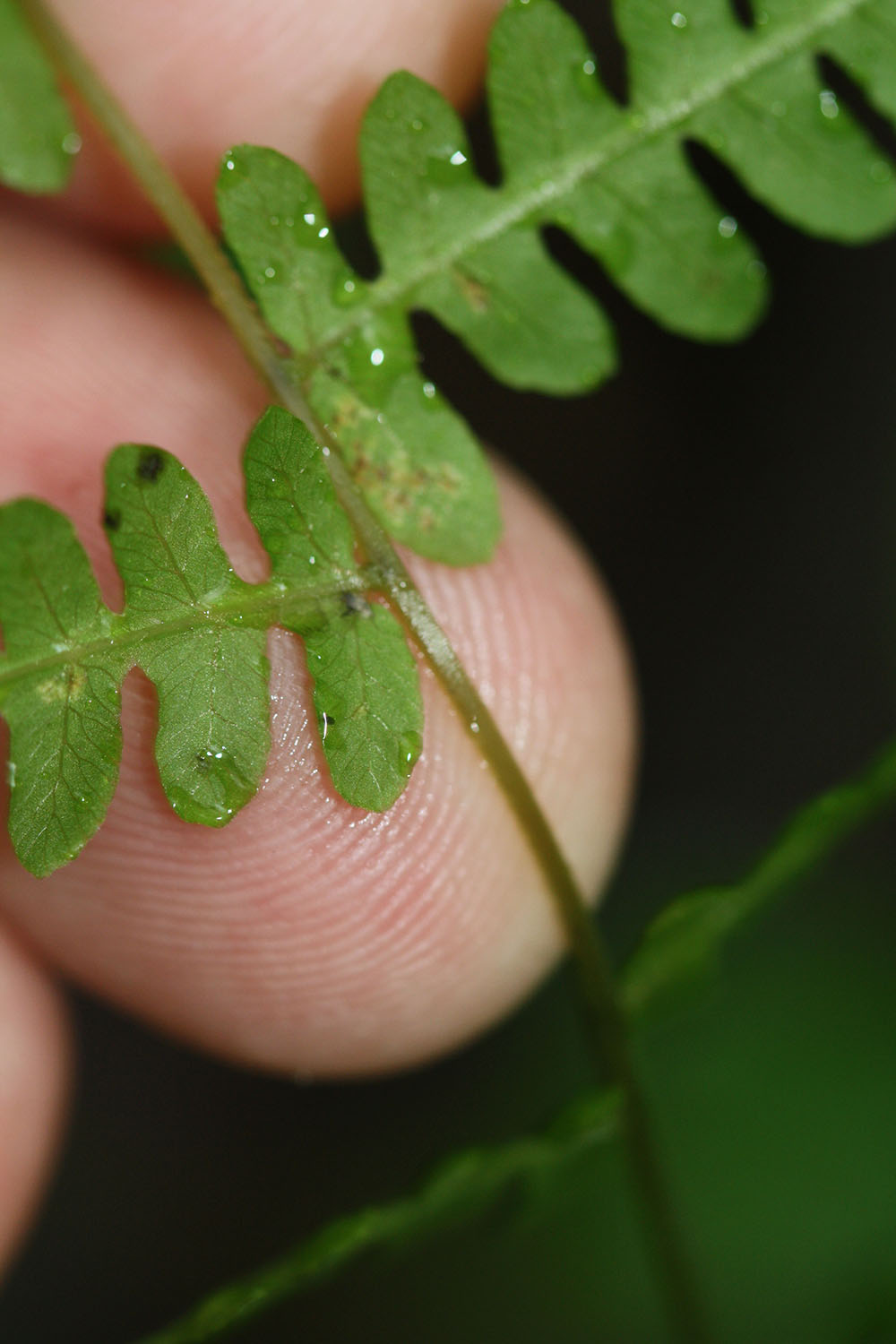
Thelypteris palustris - Marsh fern (Thelypteridaceae). Bogs, marshes, bottomland forests. Mt: Uncommon; Pd: Common; CP: Common. Note that the veinlets have a "wishbone" appearance, branching once before reaching the pinnule margin. This character state is shared with Osmunda claytoniana and Osmundastrum cinnamomea. However, Osmunda claytoniana exhibits distinctly broader and more rounded pinnules and the veinlets often branch more than once near the tip of the pinnule (in T. palustris, the veinlets near the pinnule tip branch only once or not at all). Osmundastrum cinnamomea exhibits curly hairs on the pinnae. |